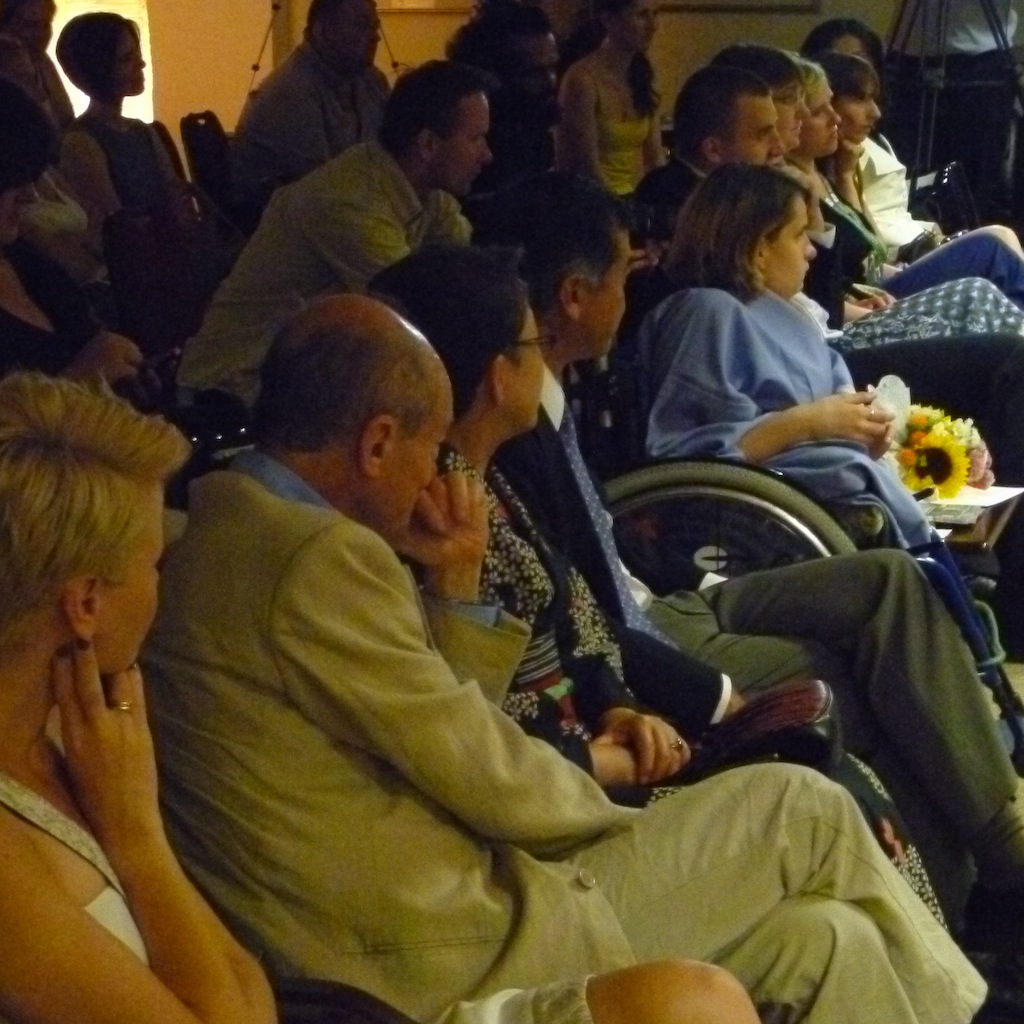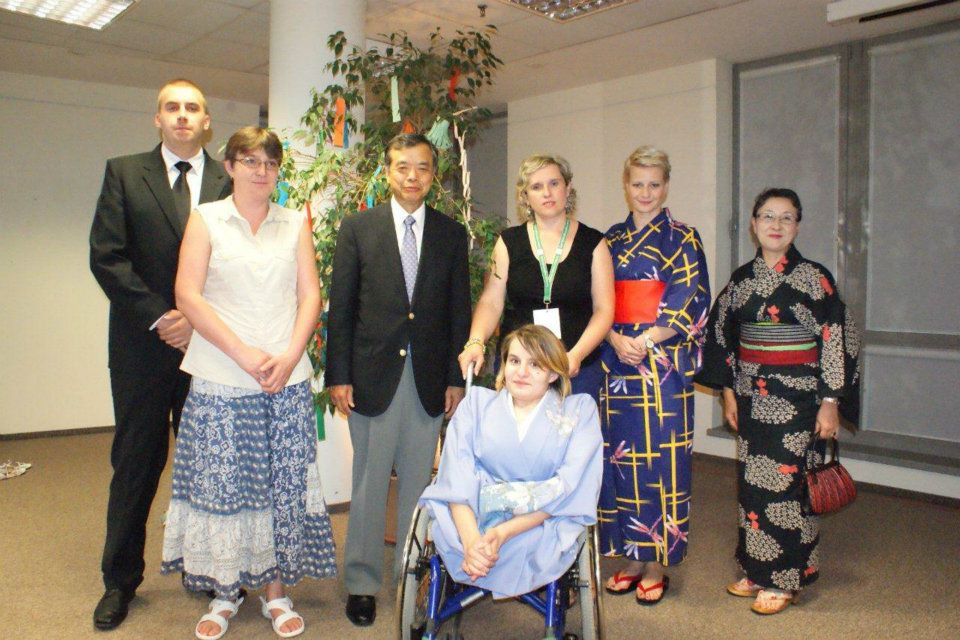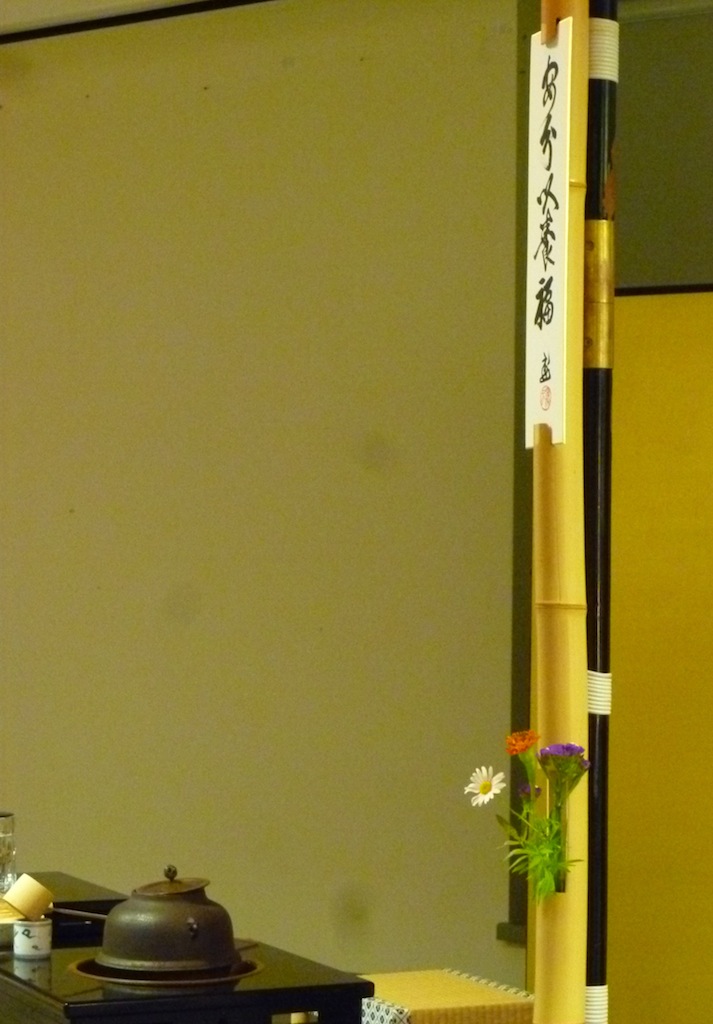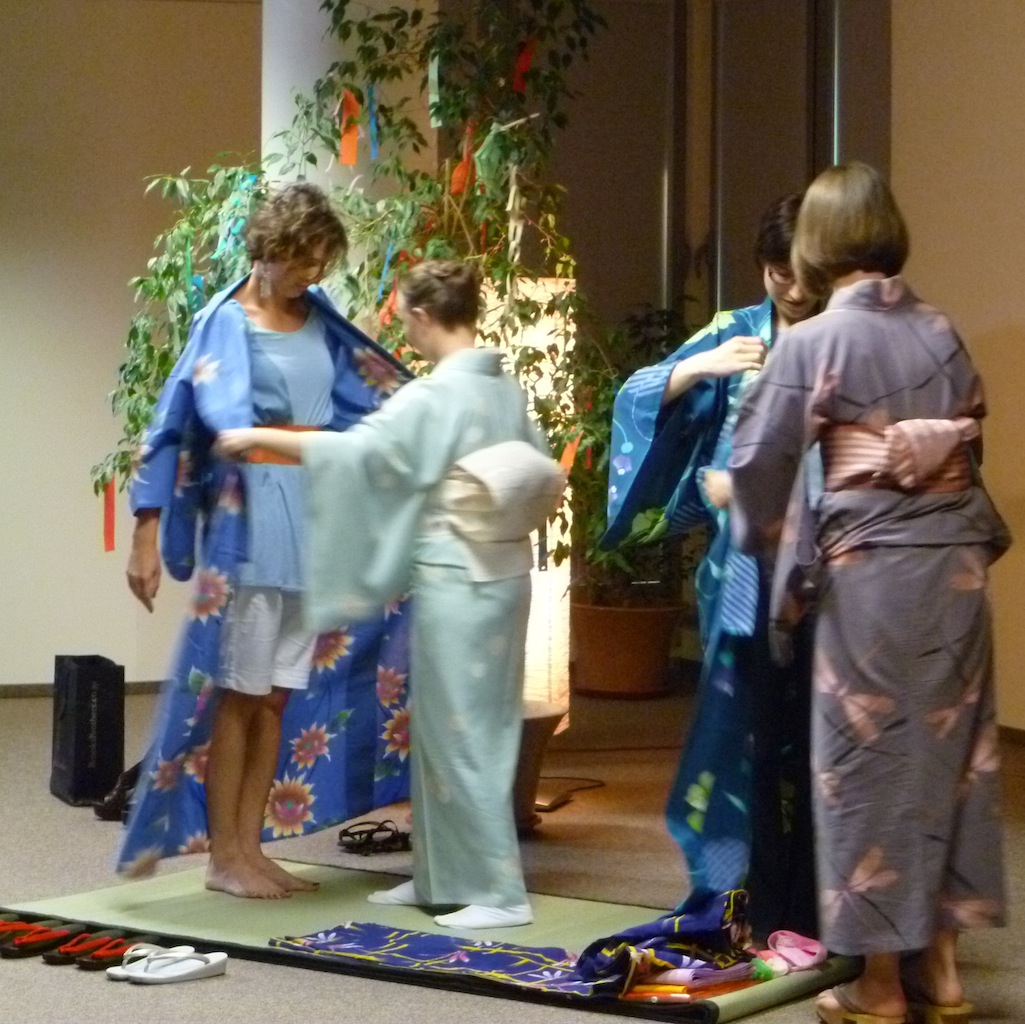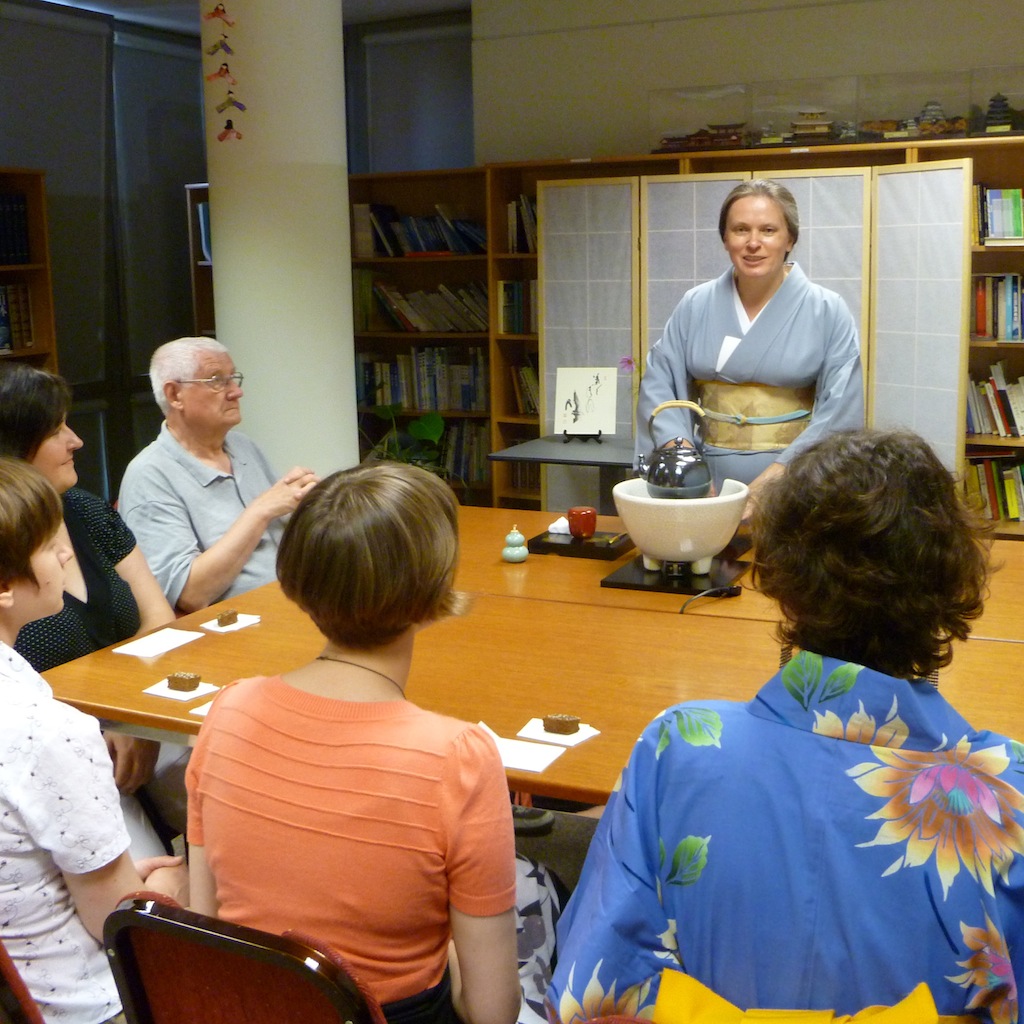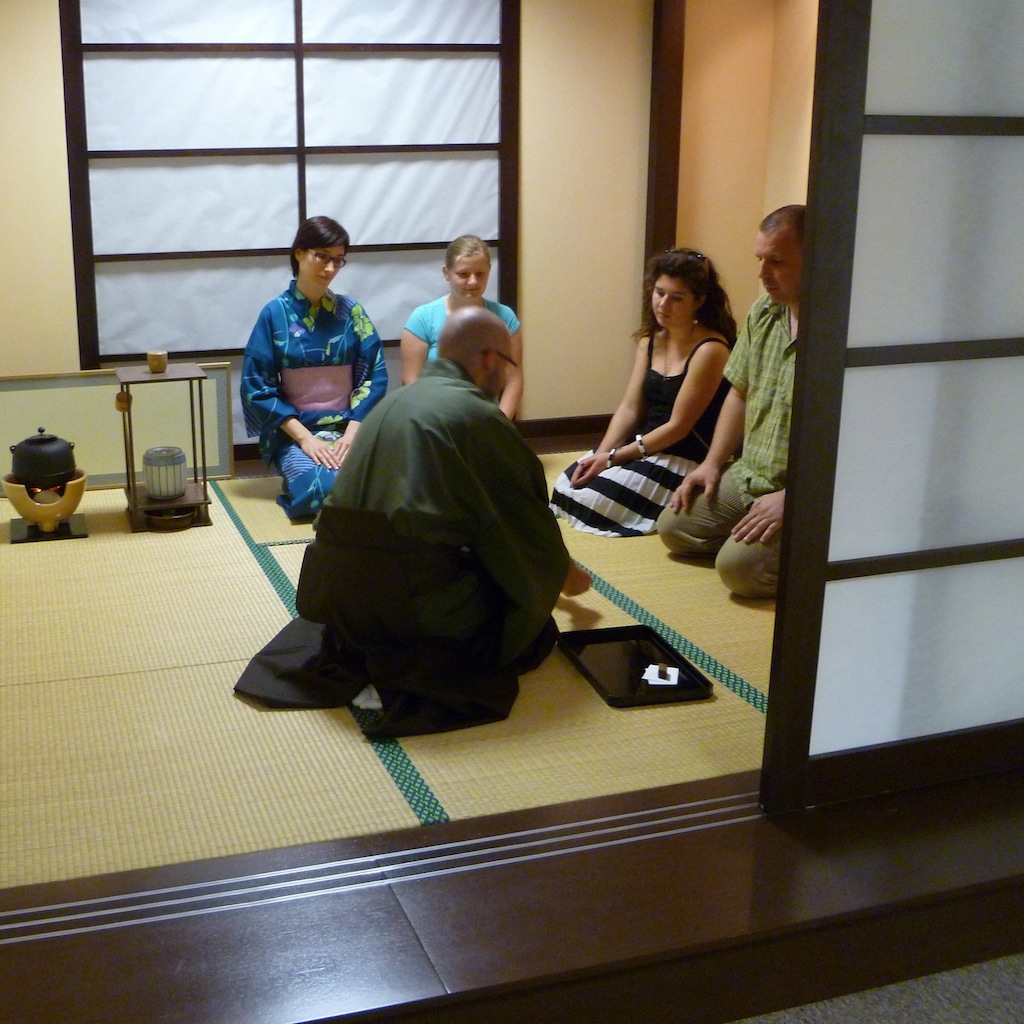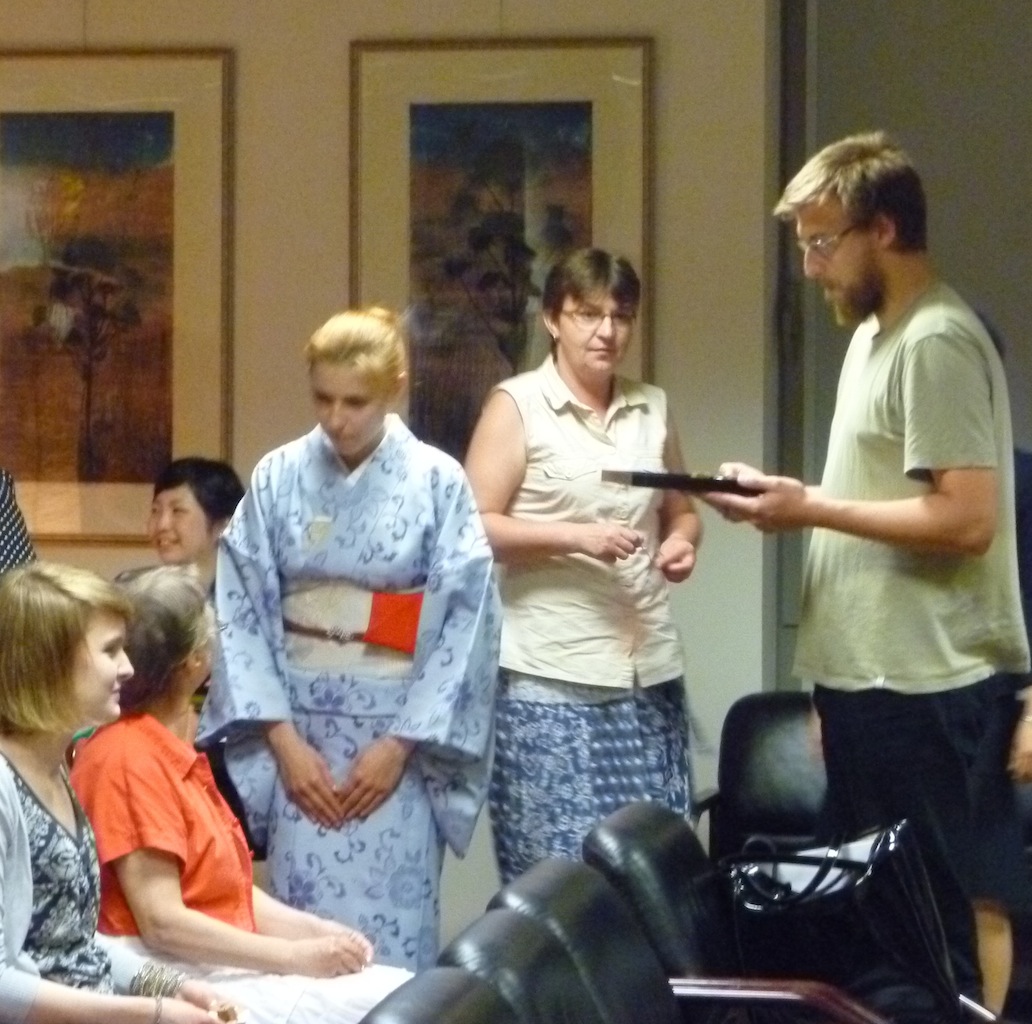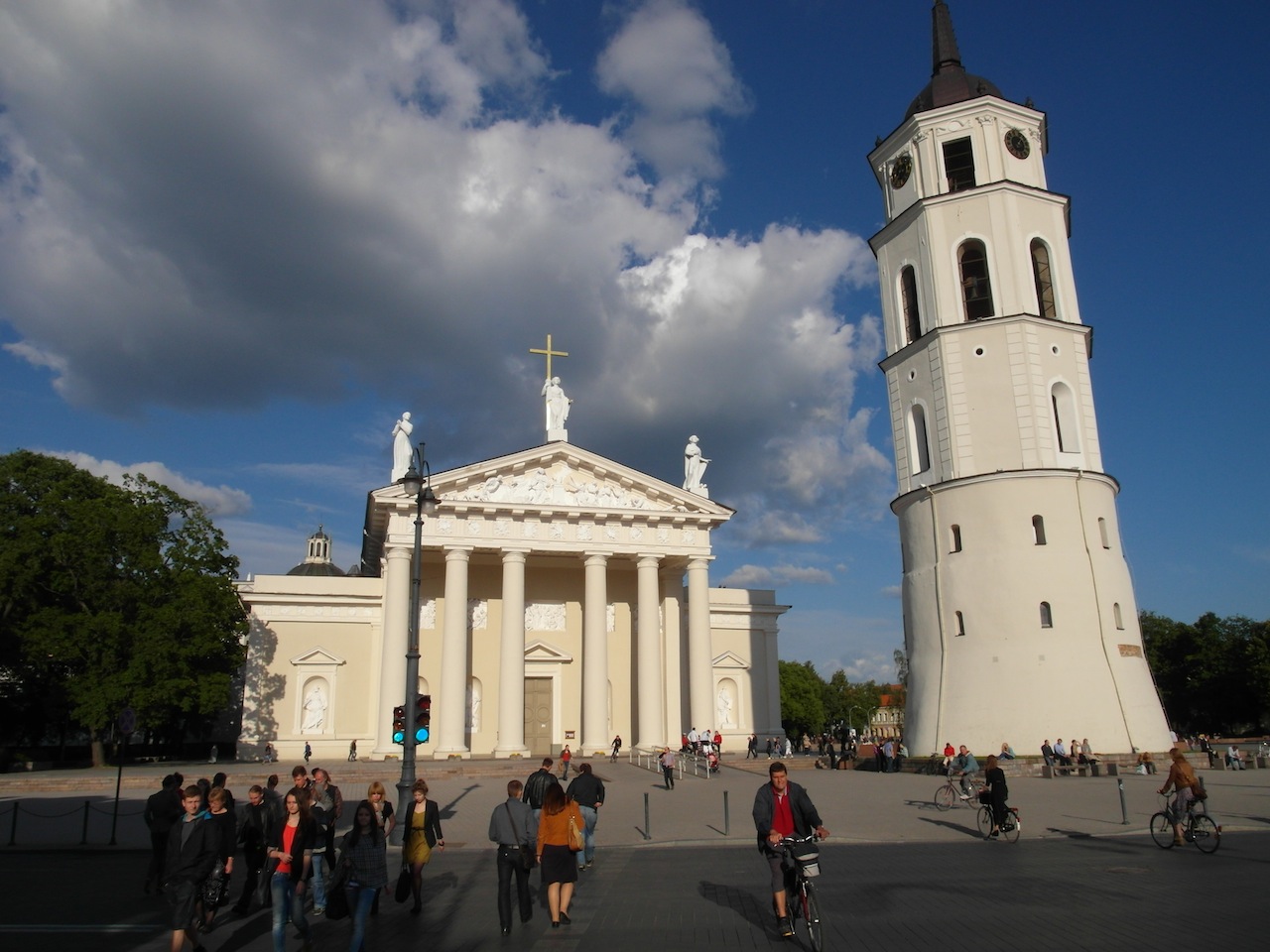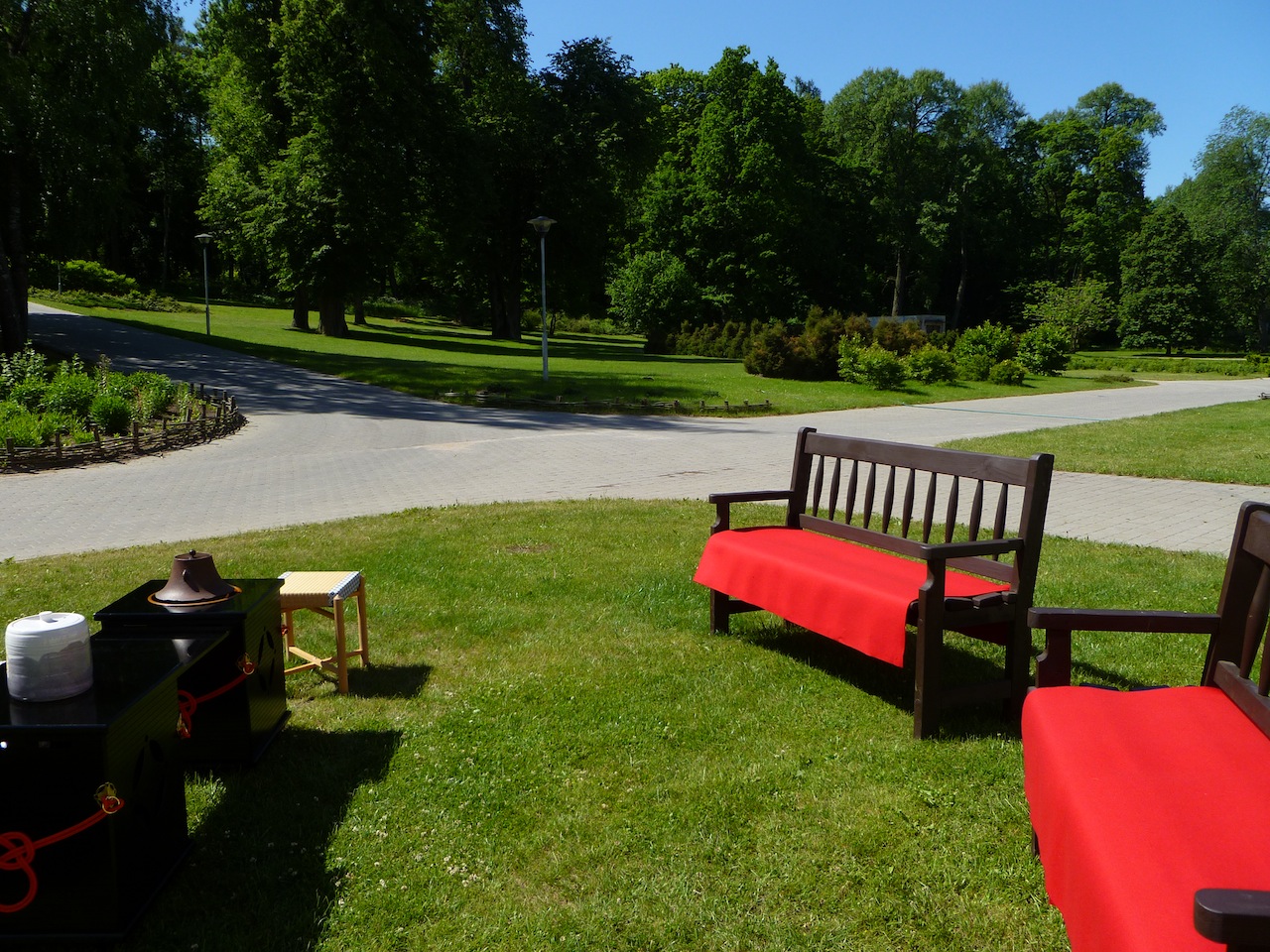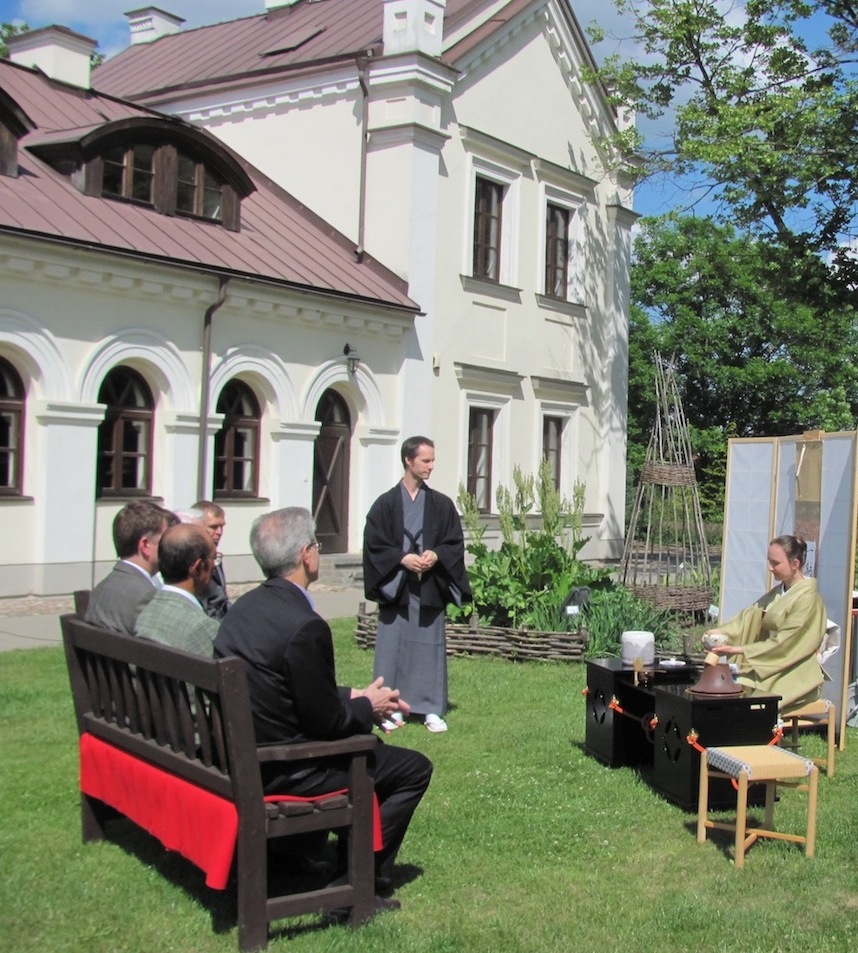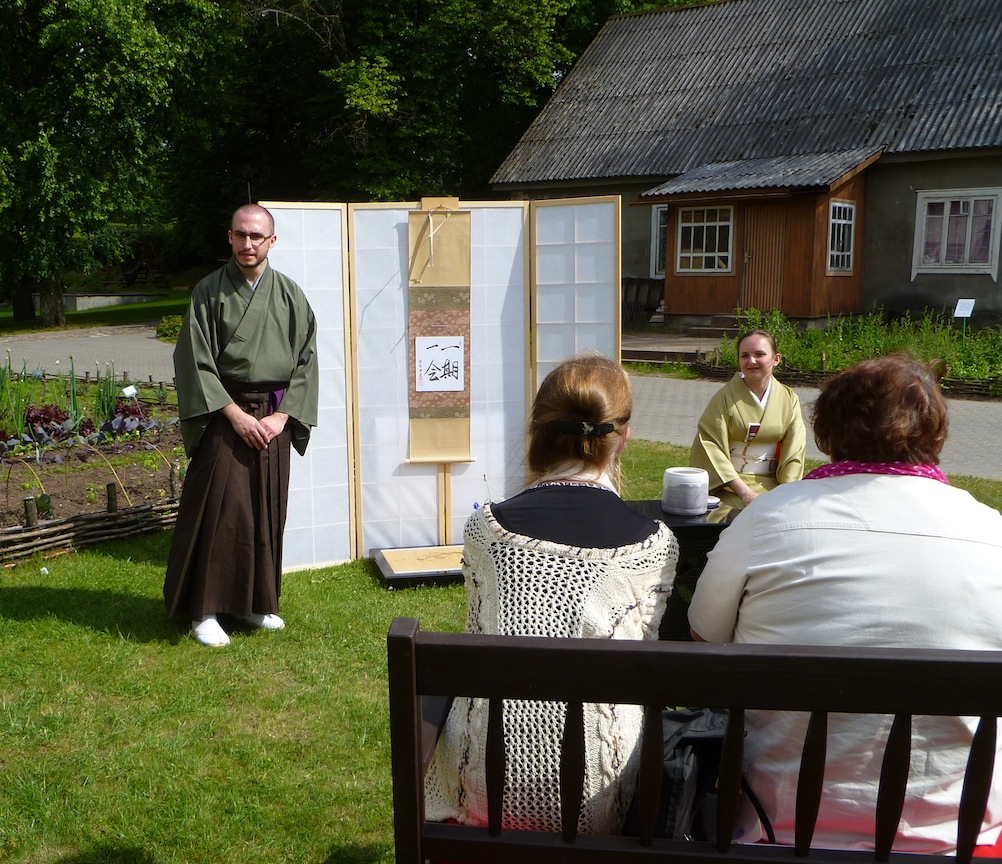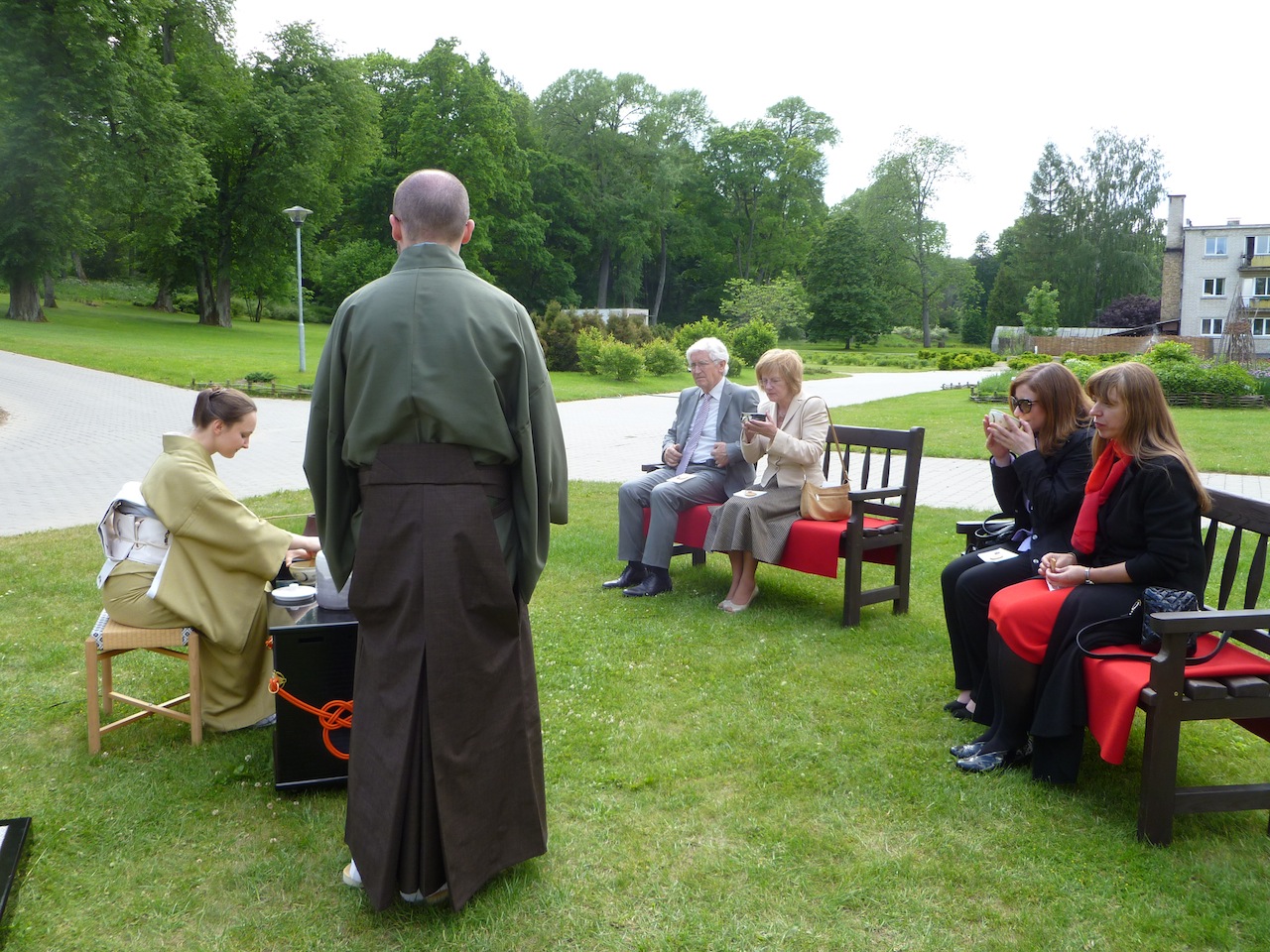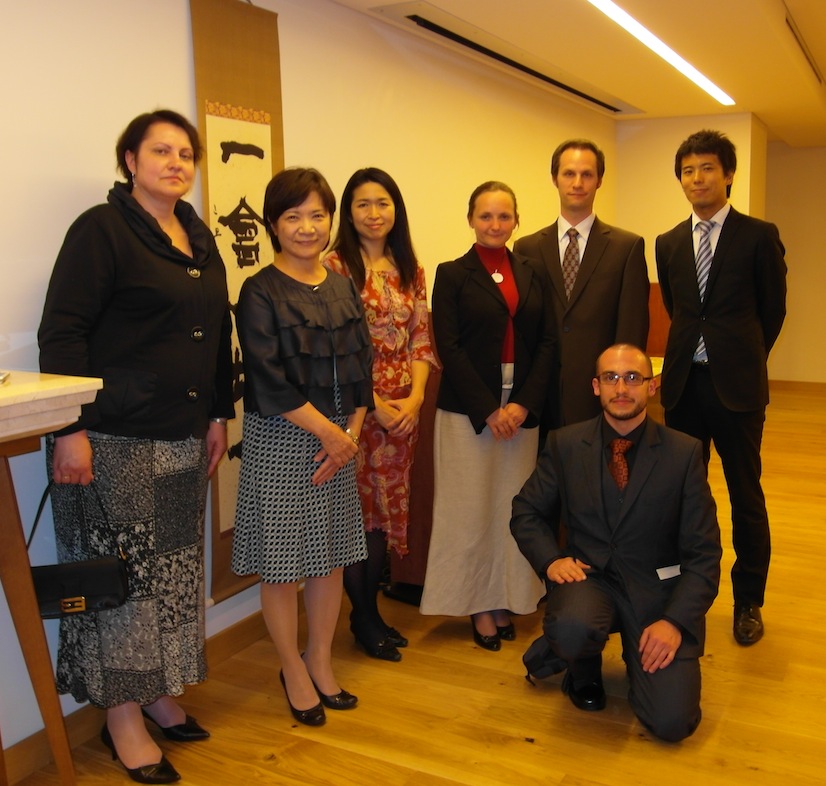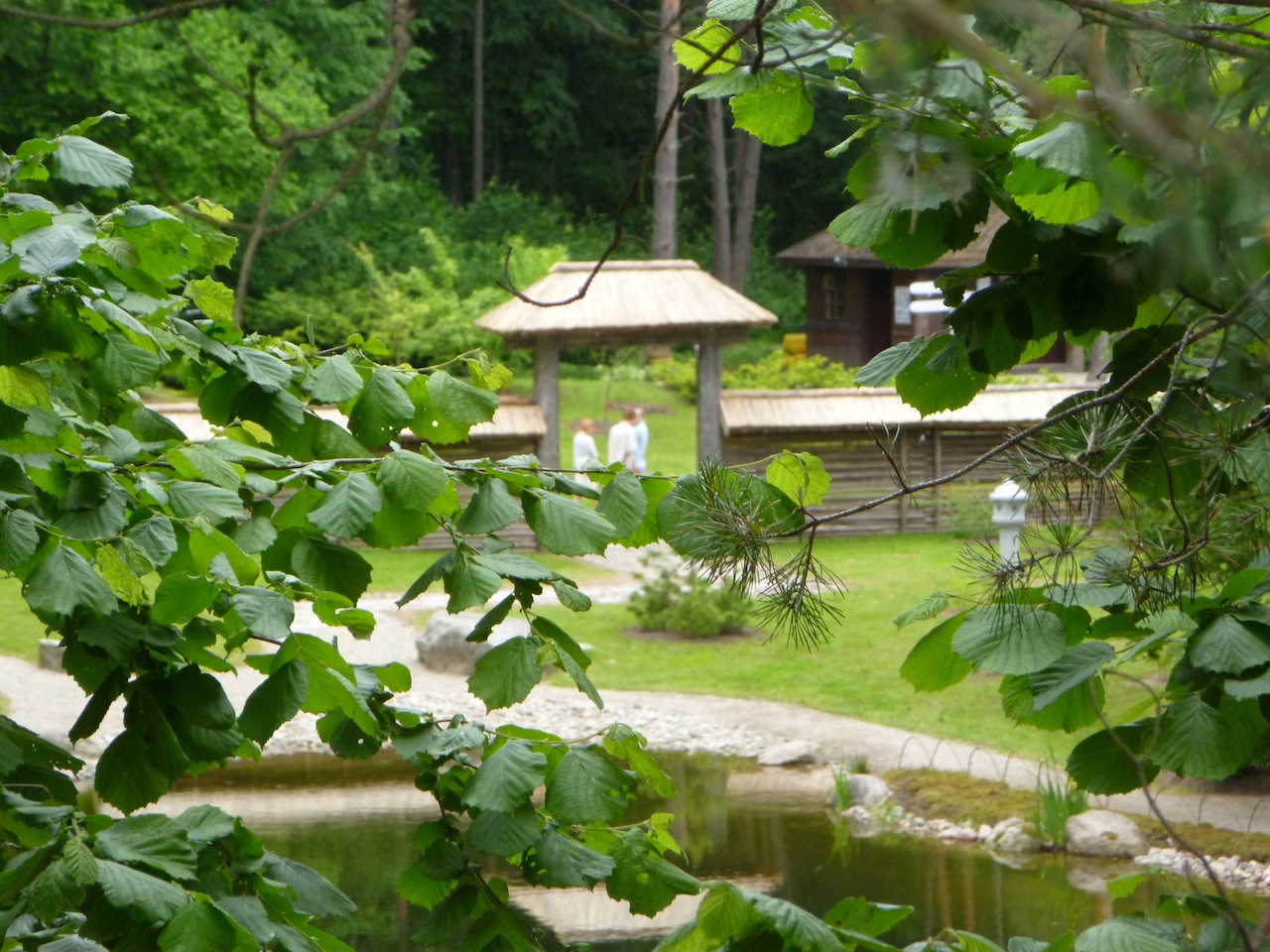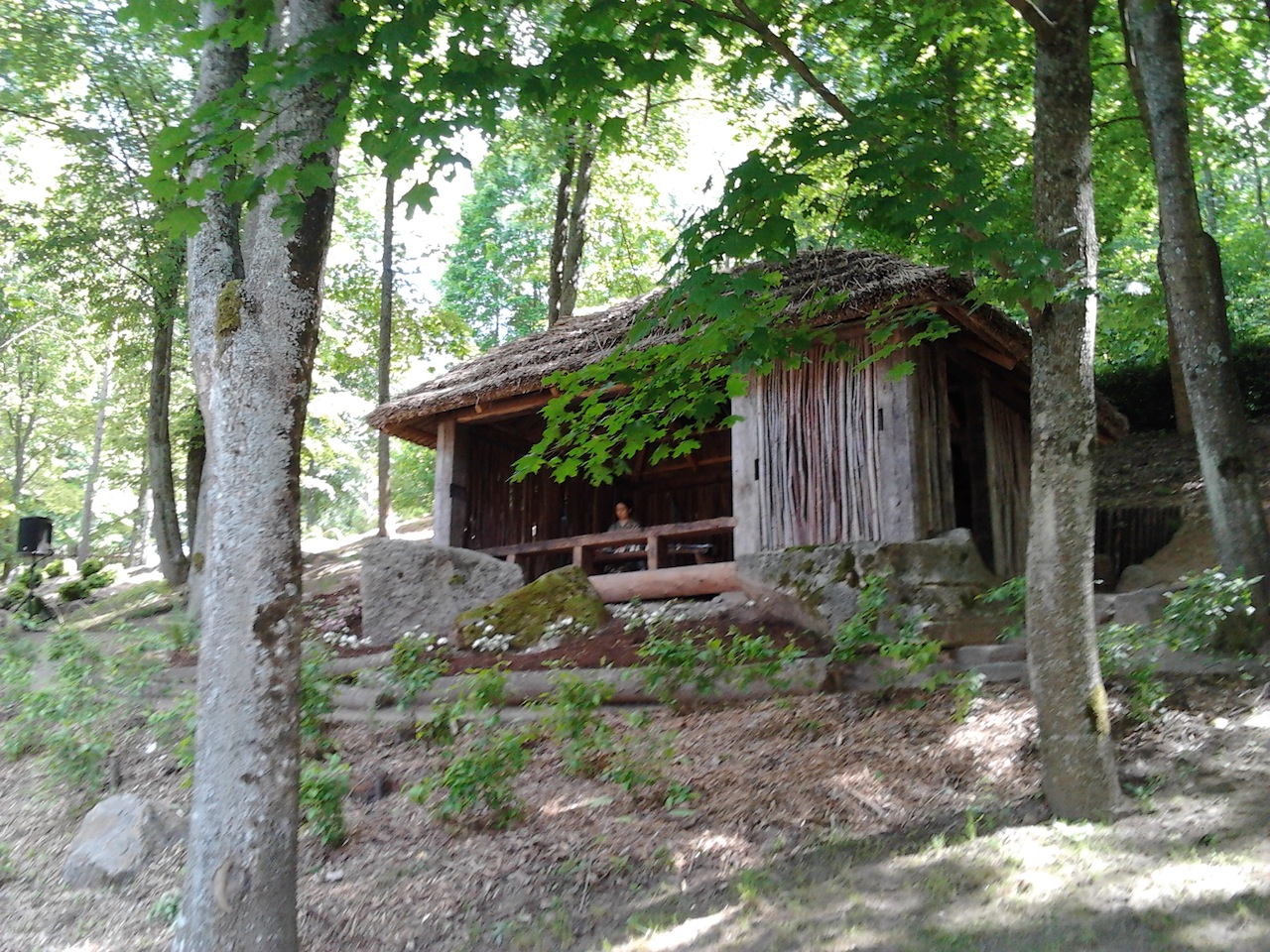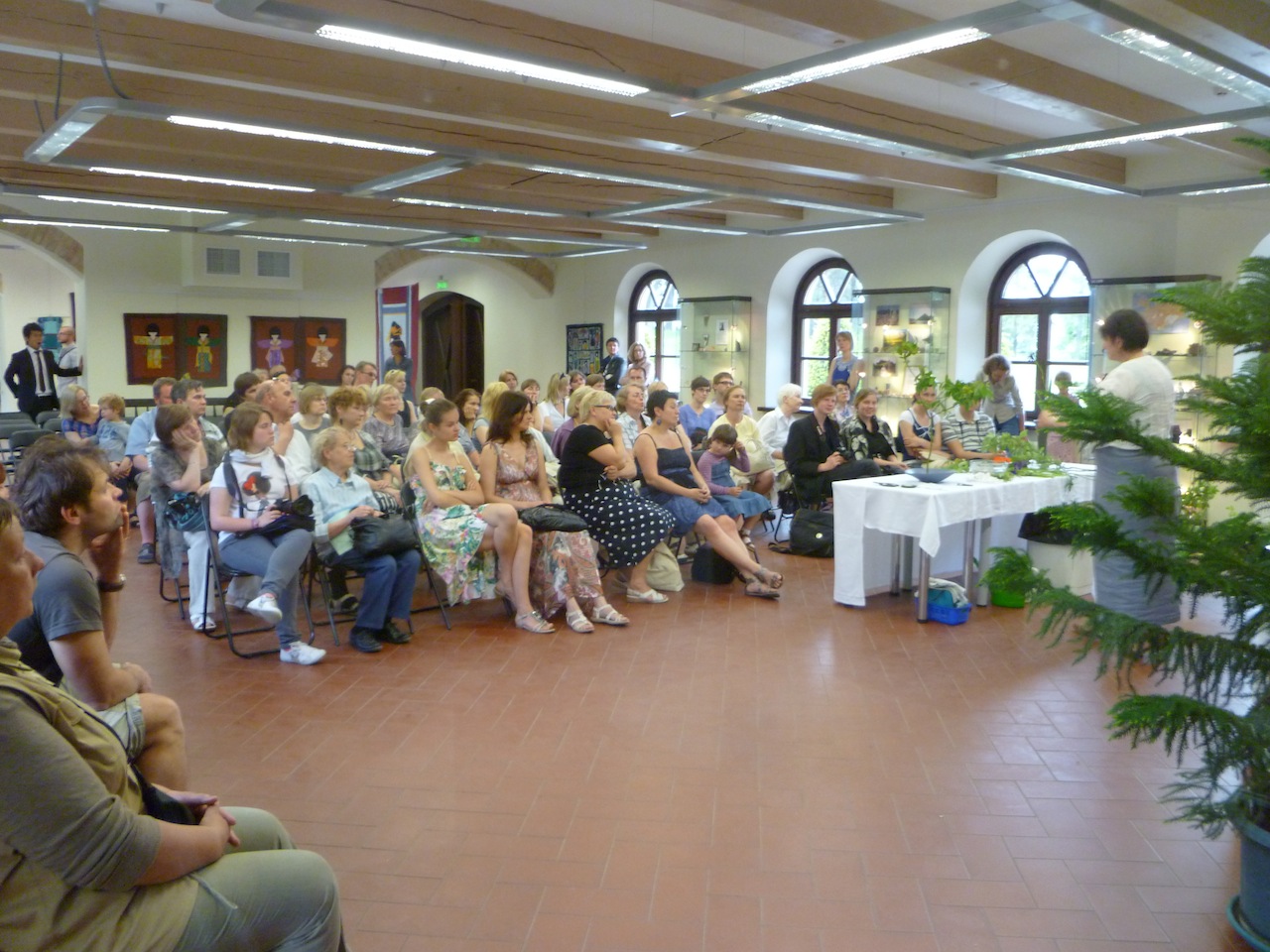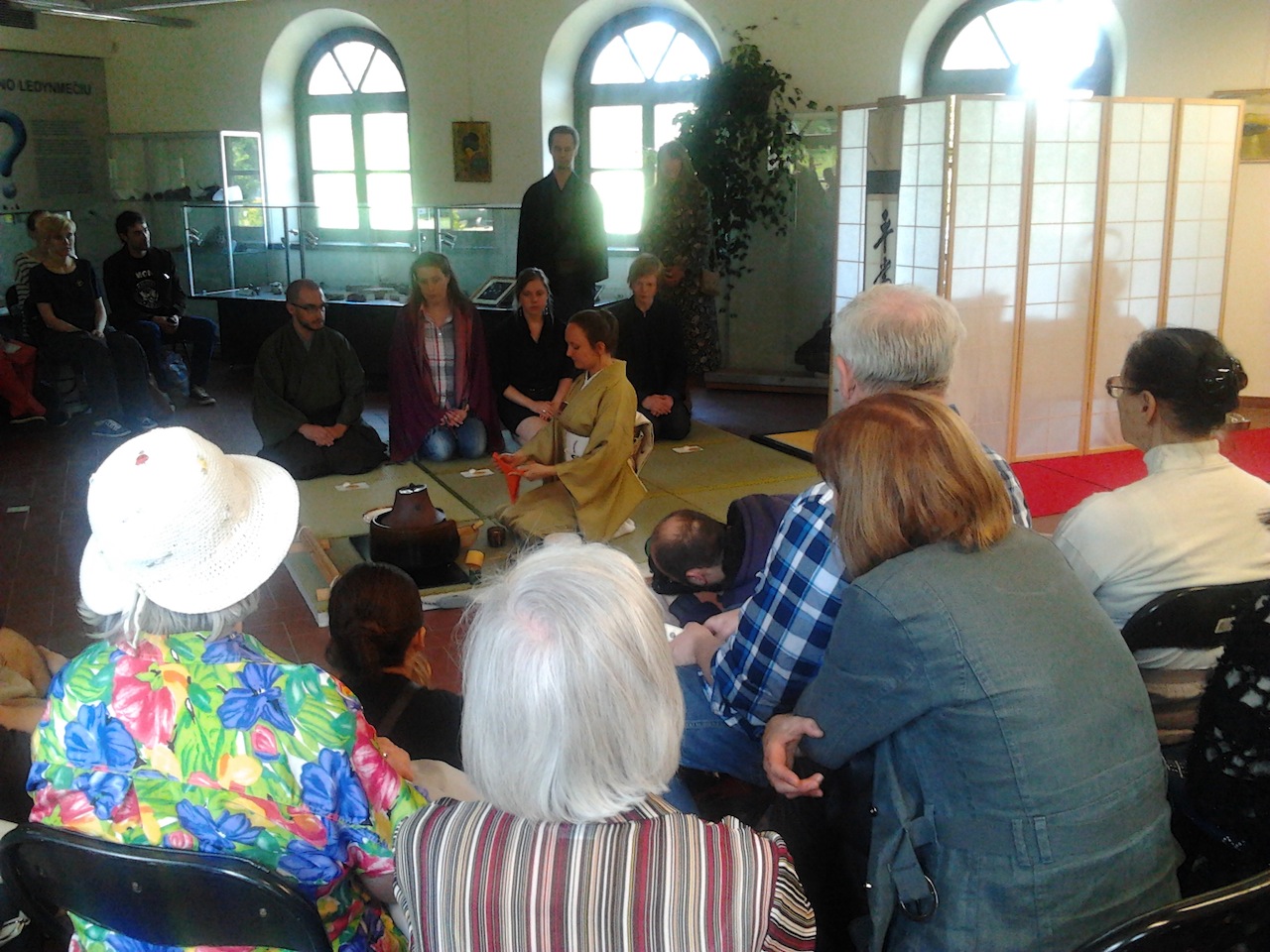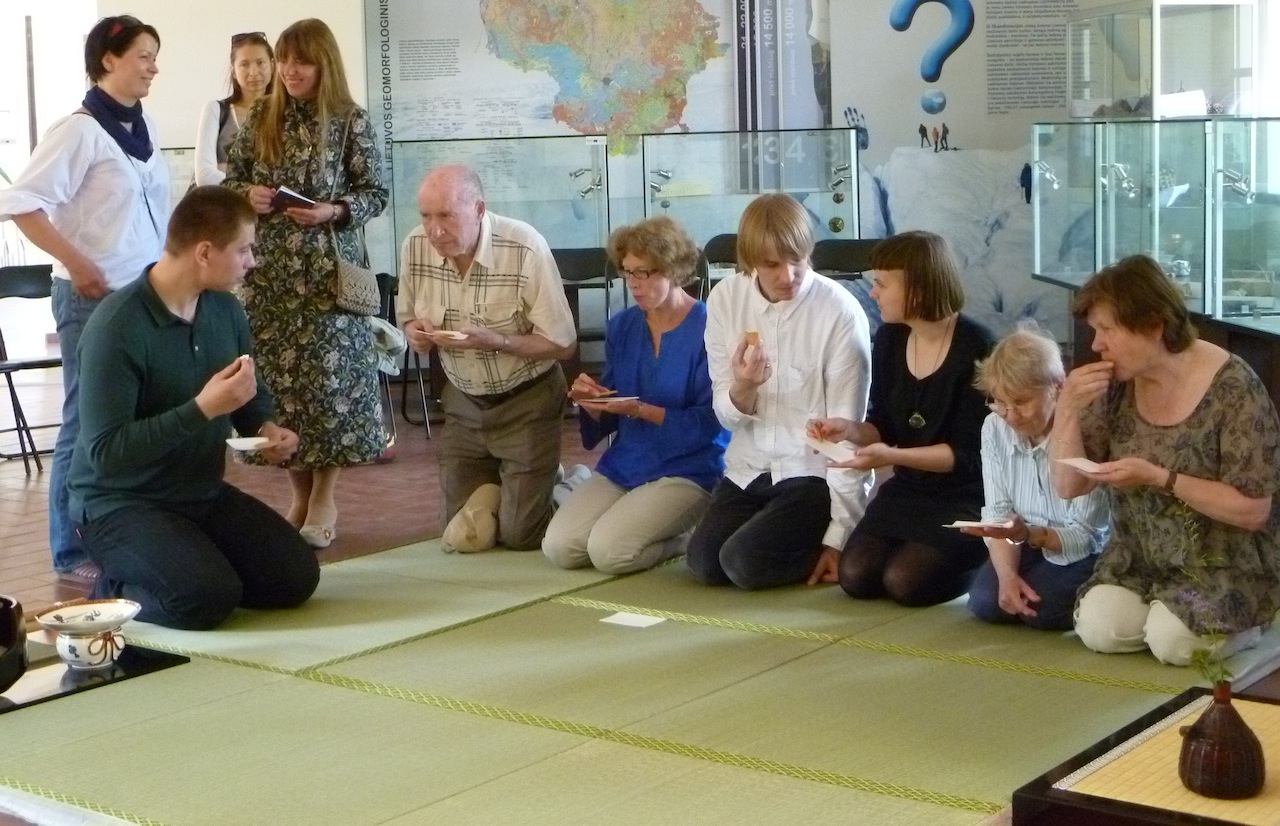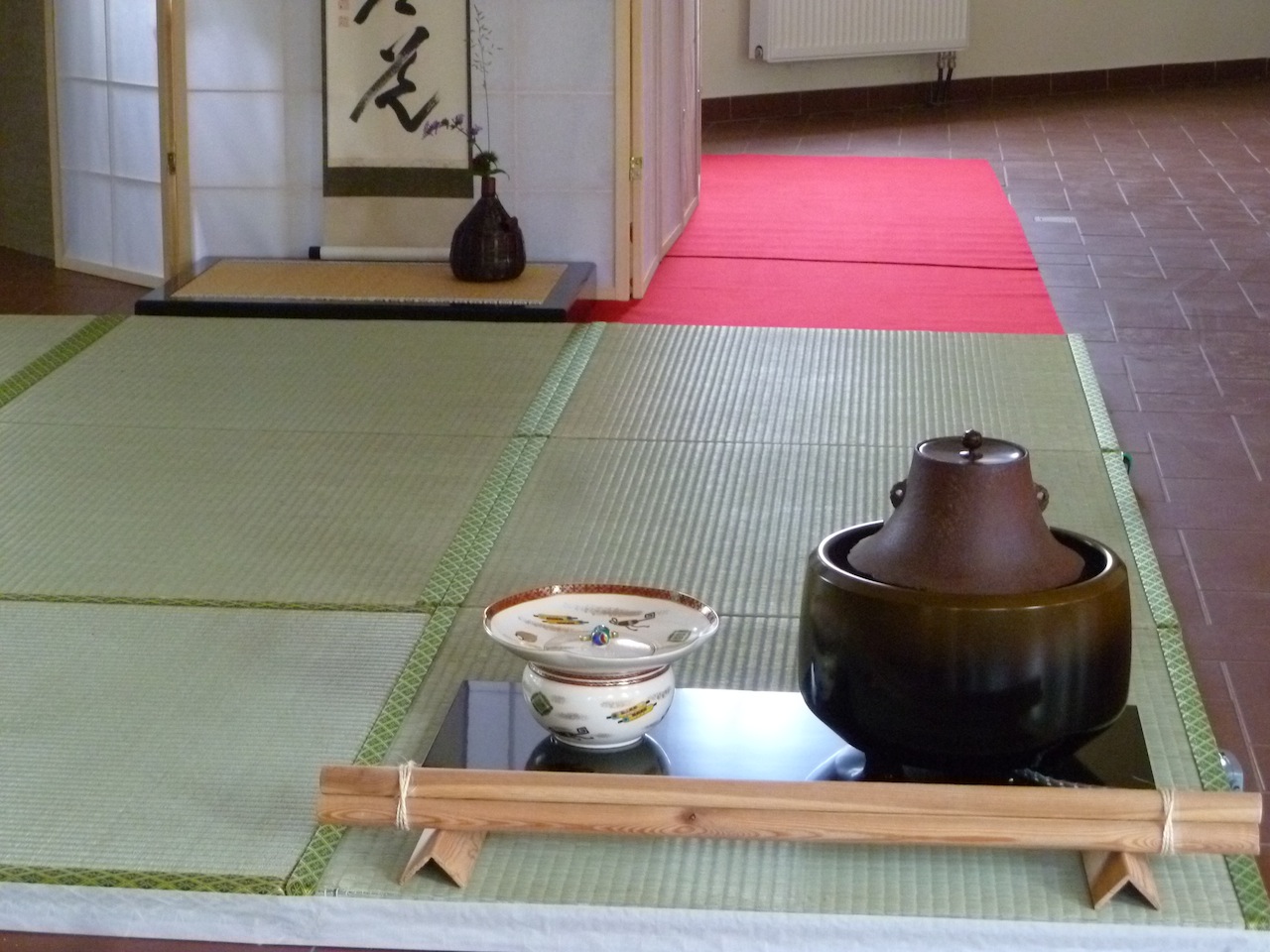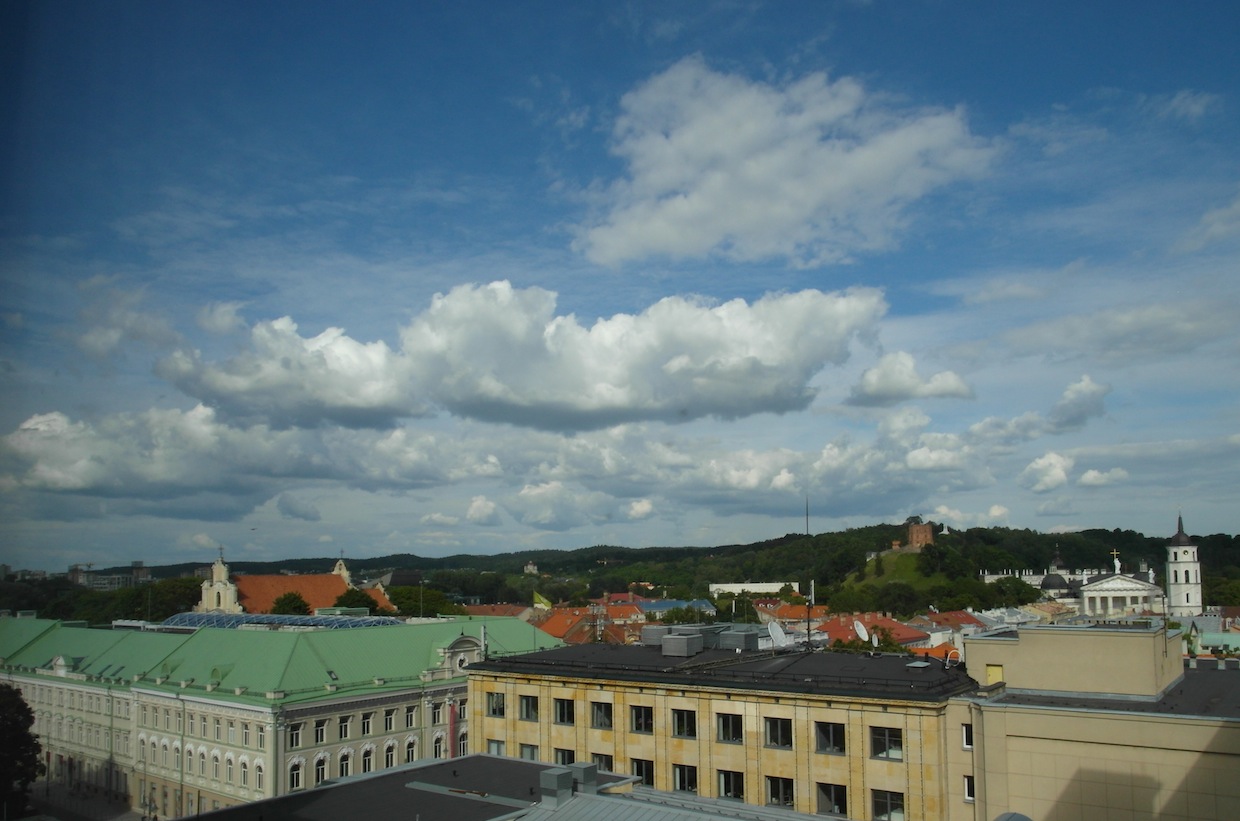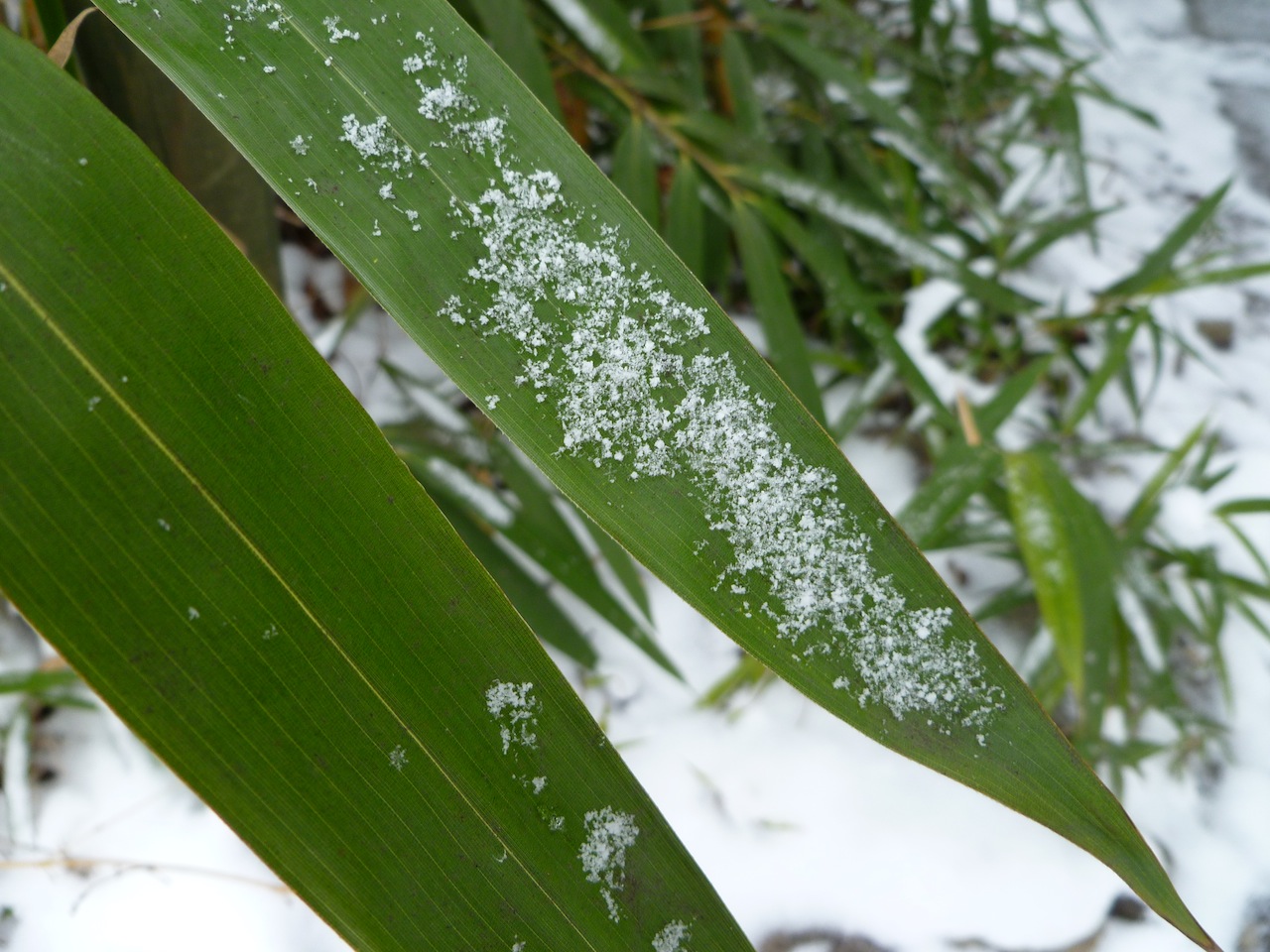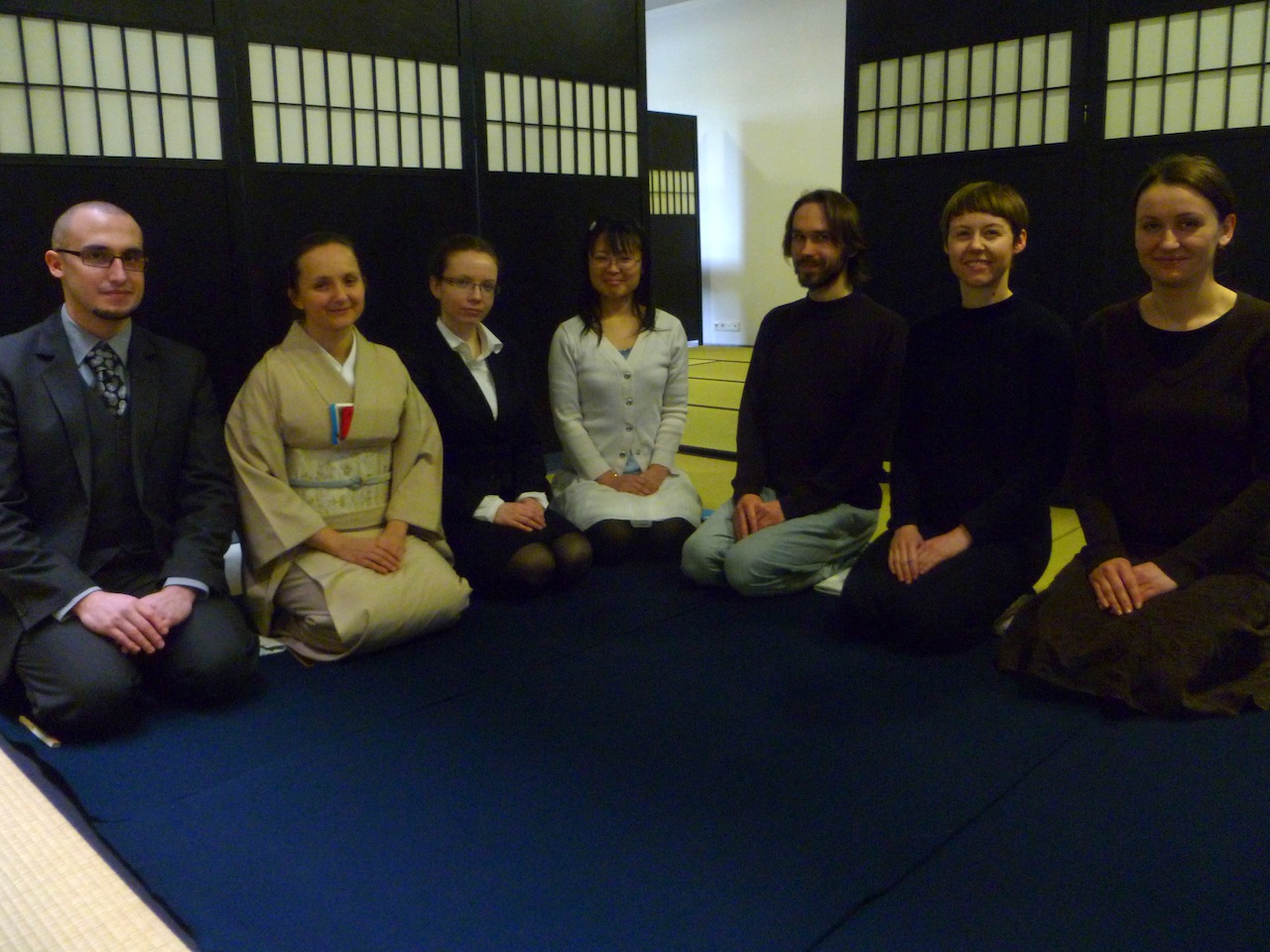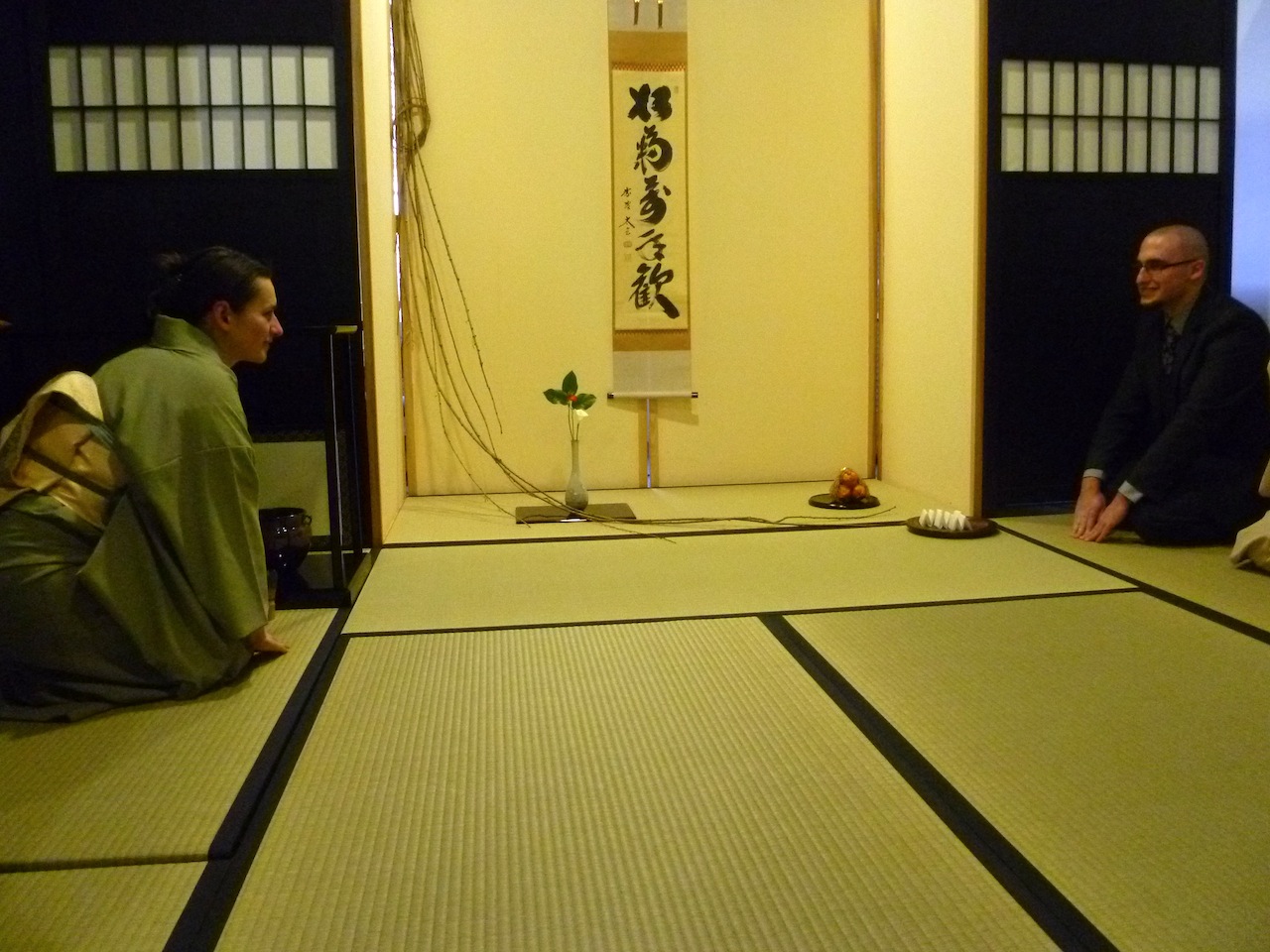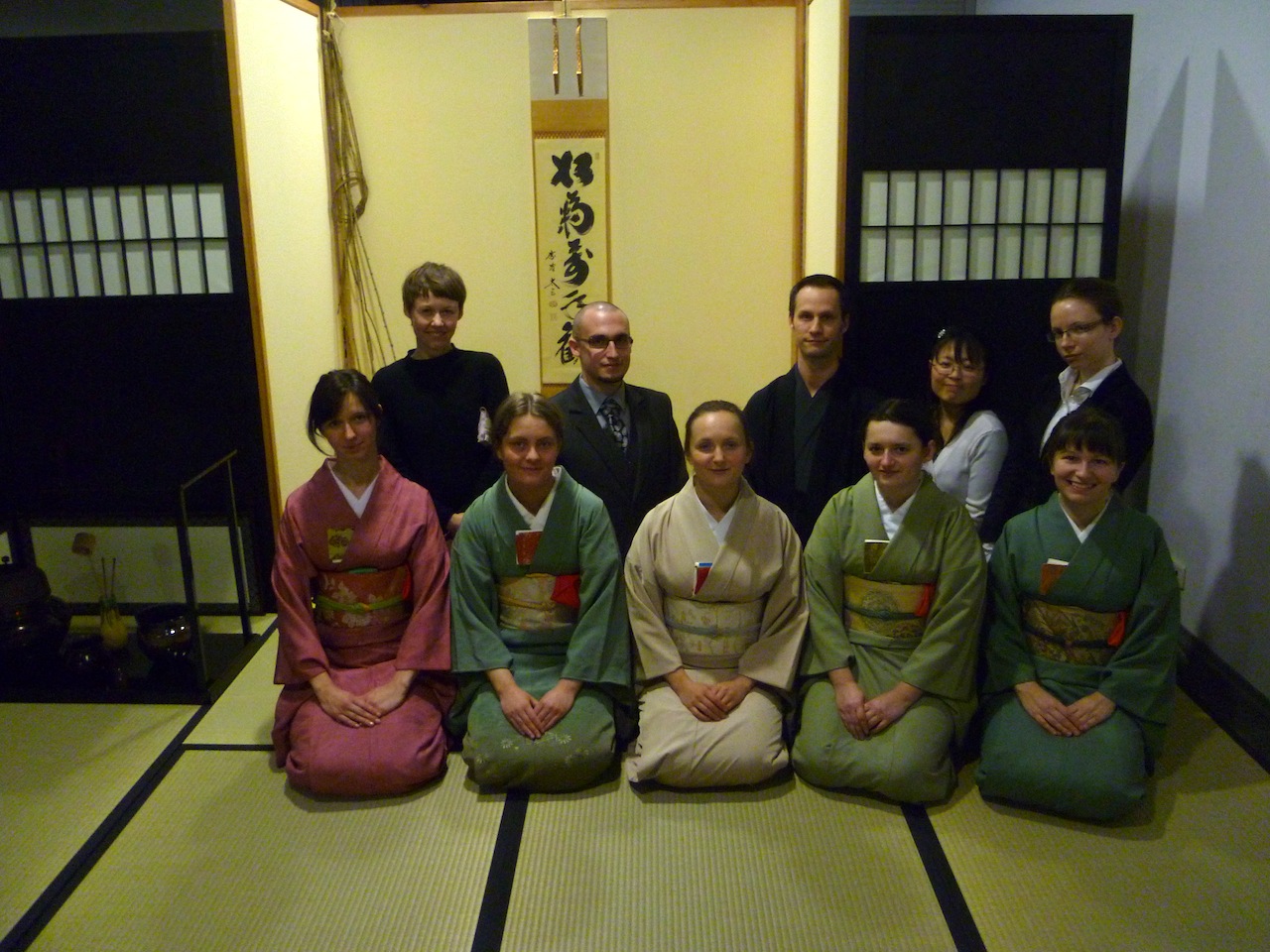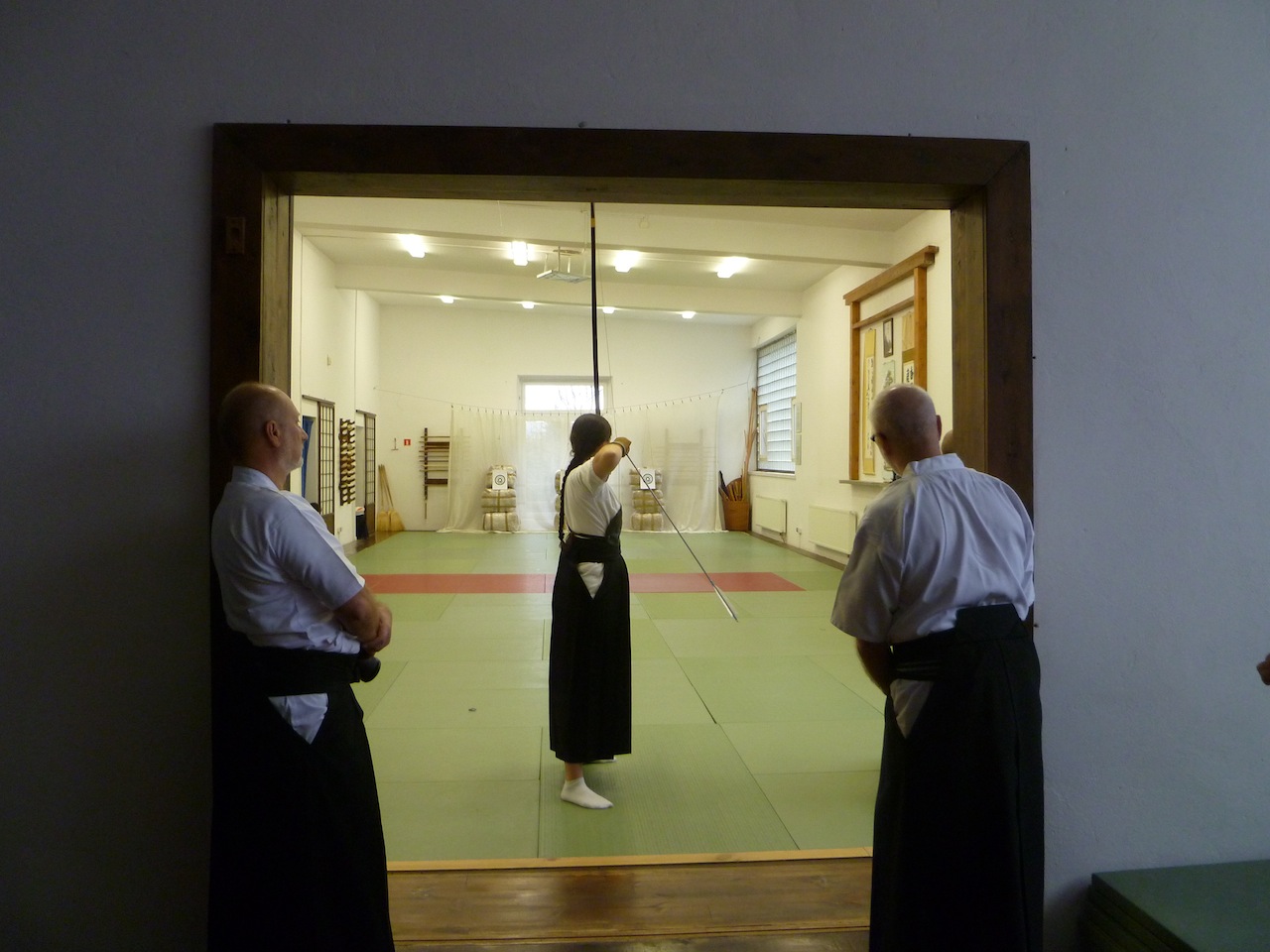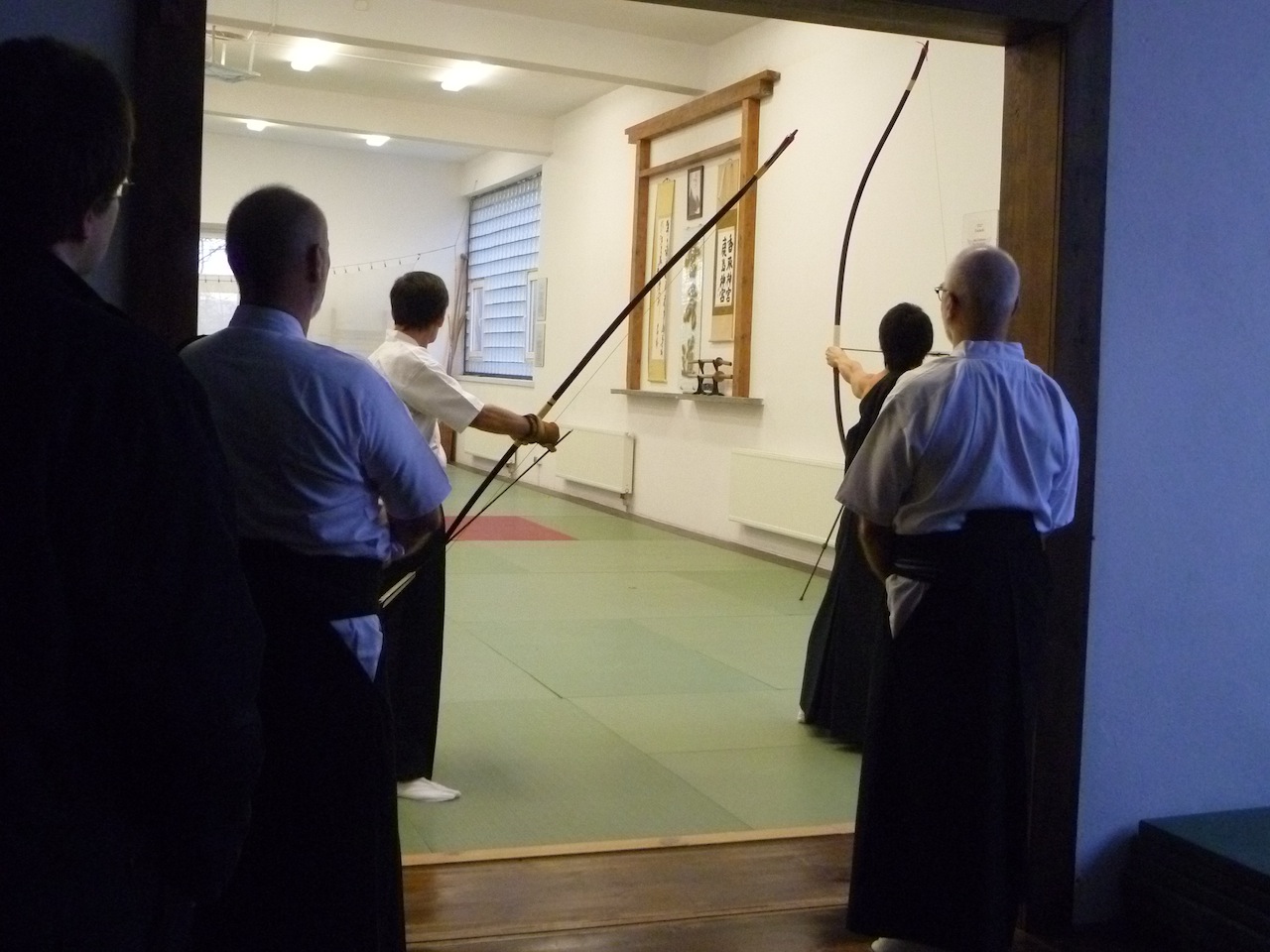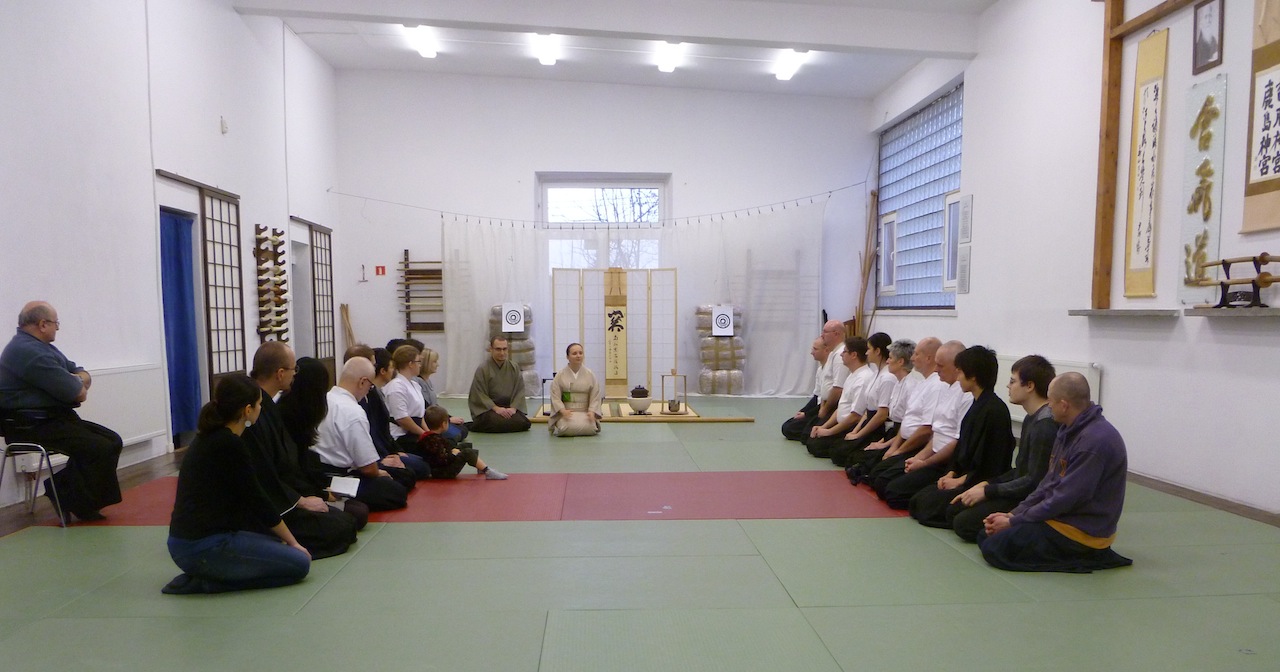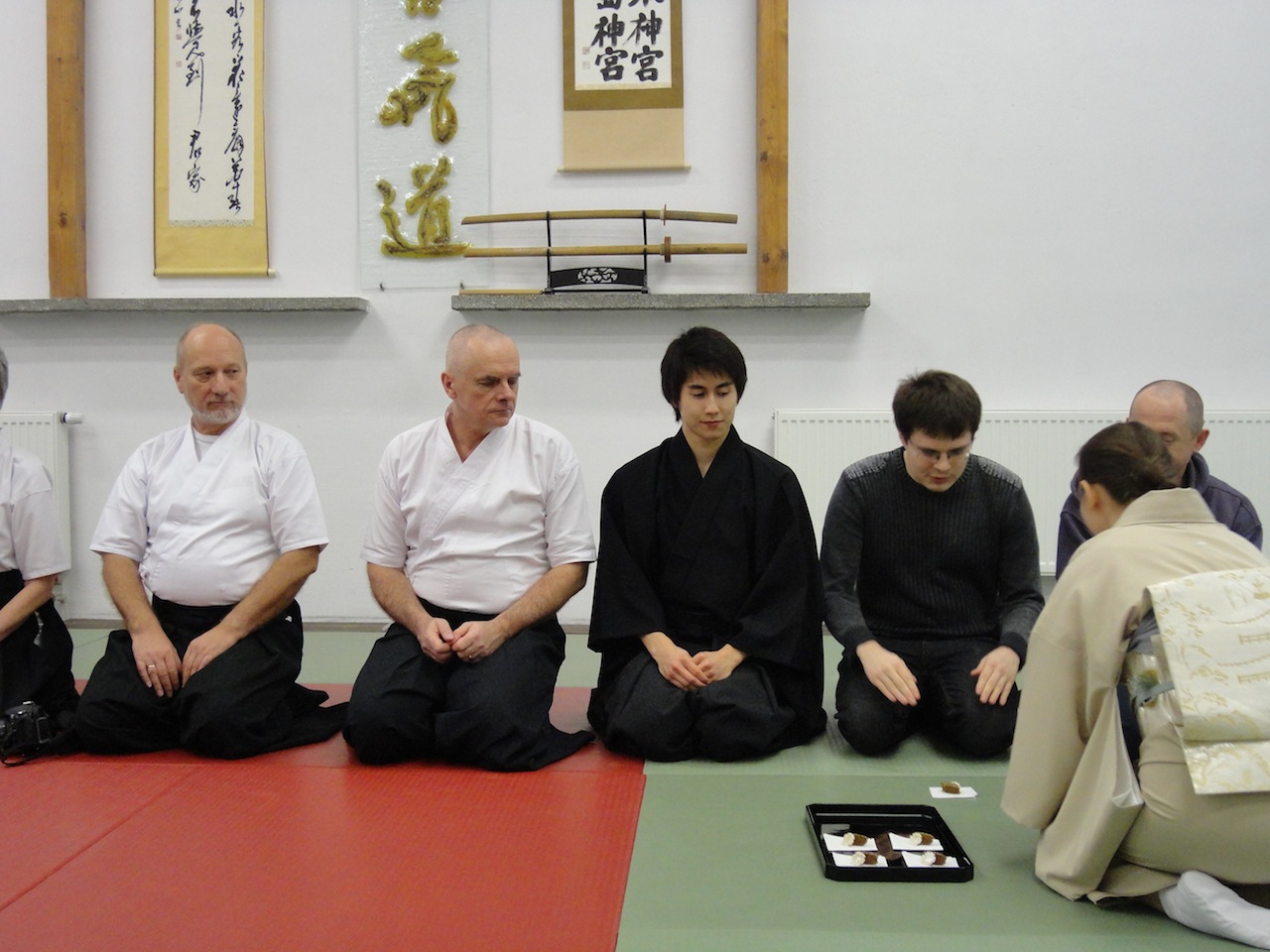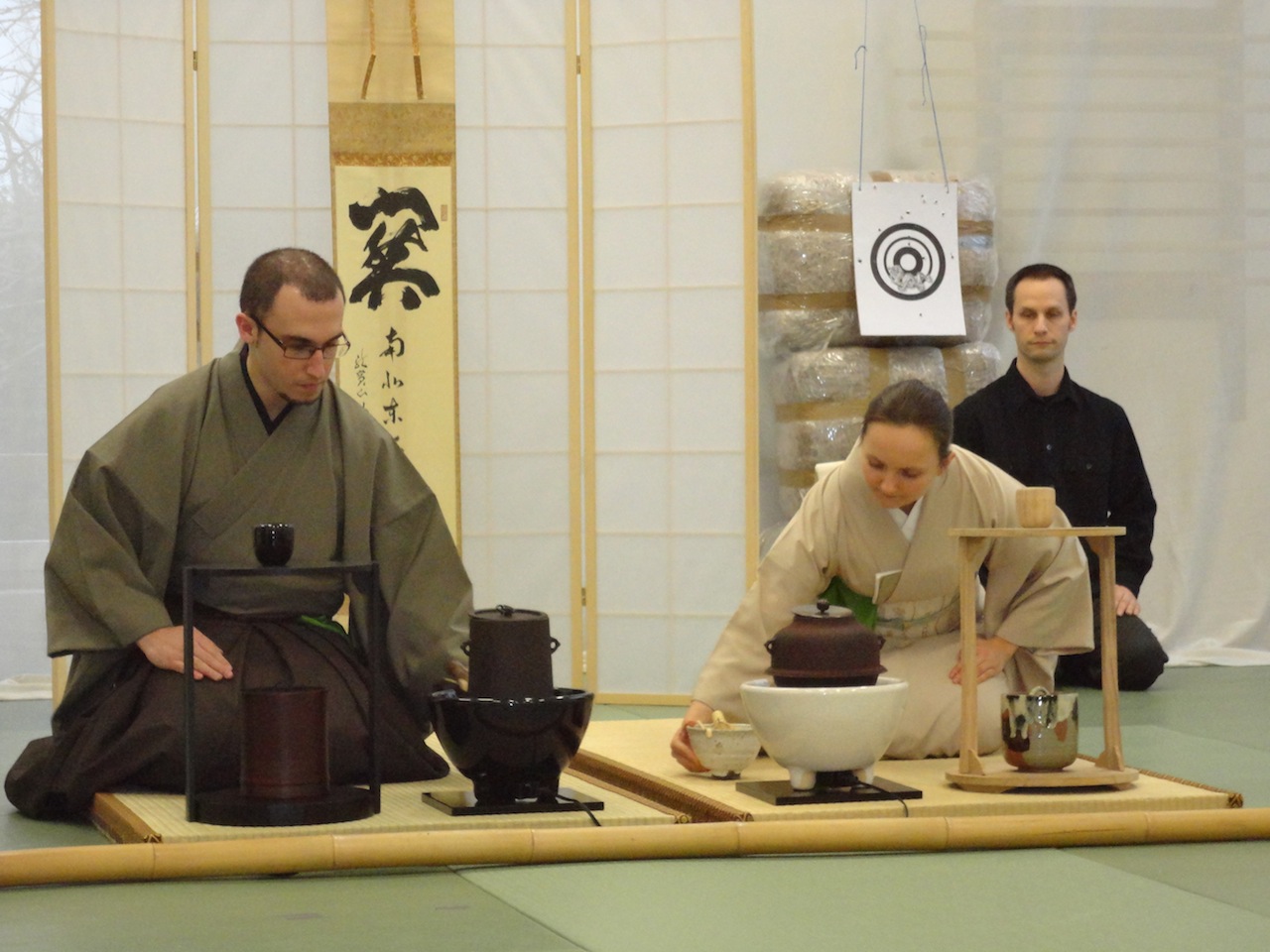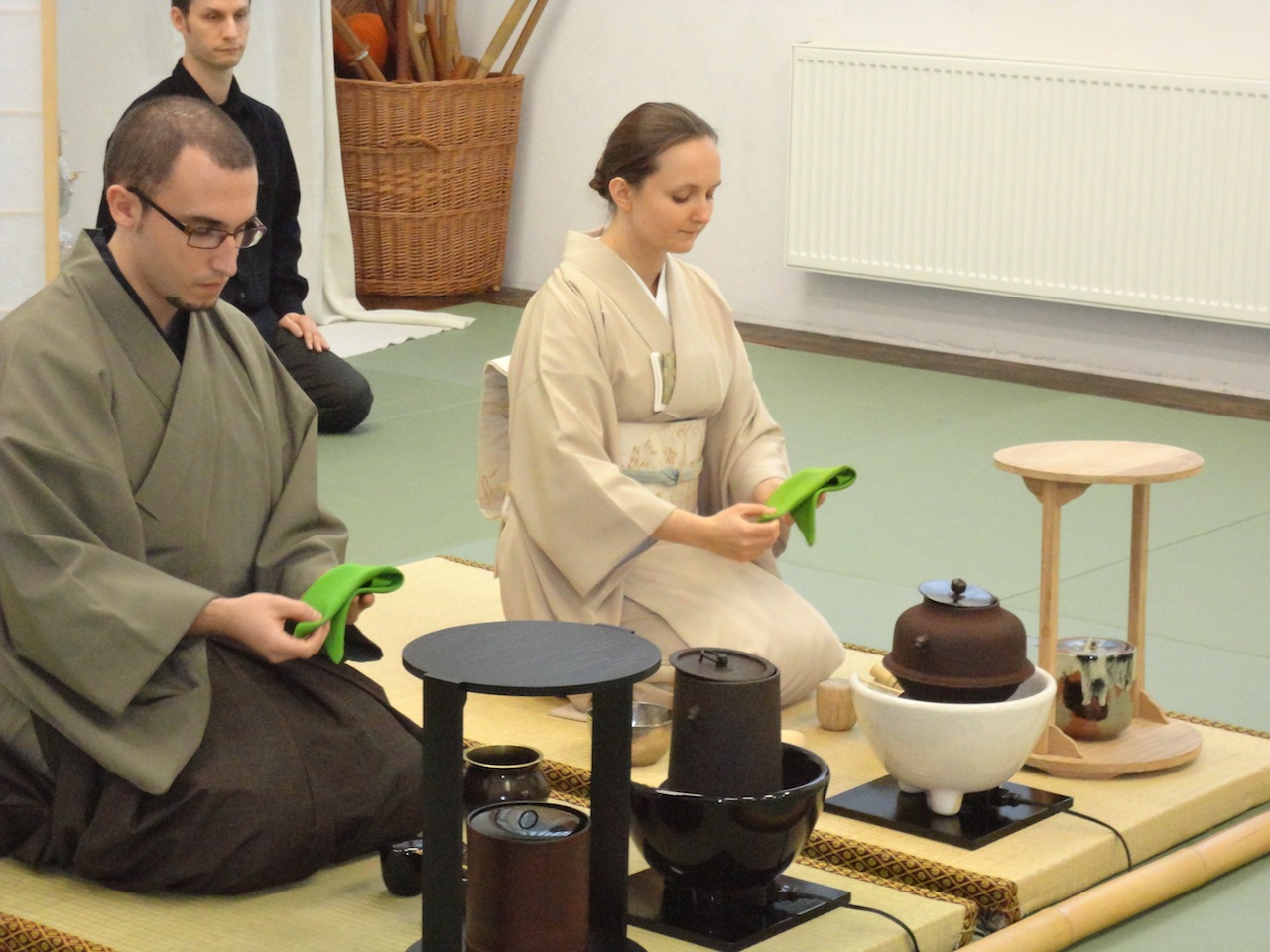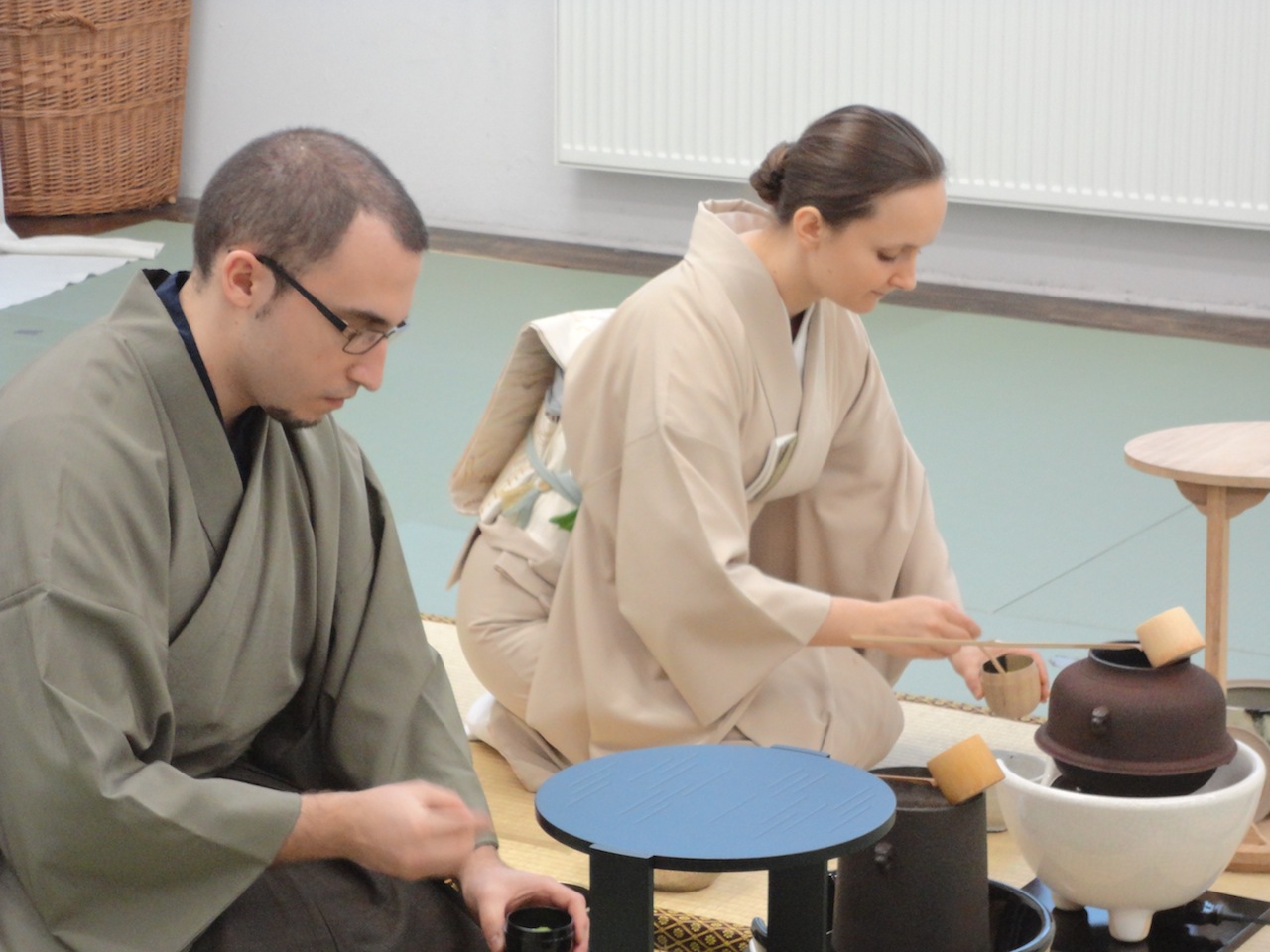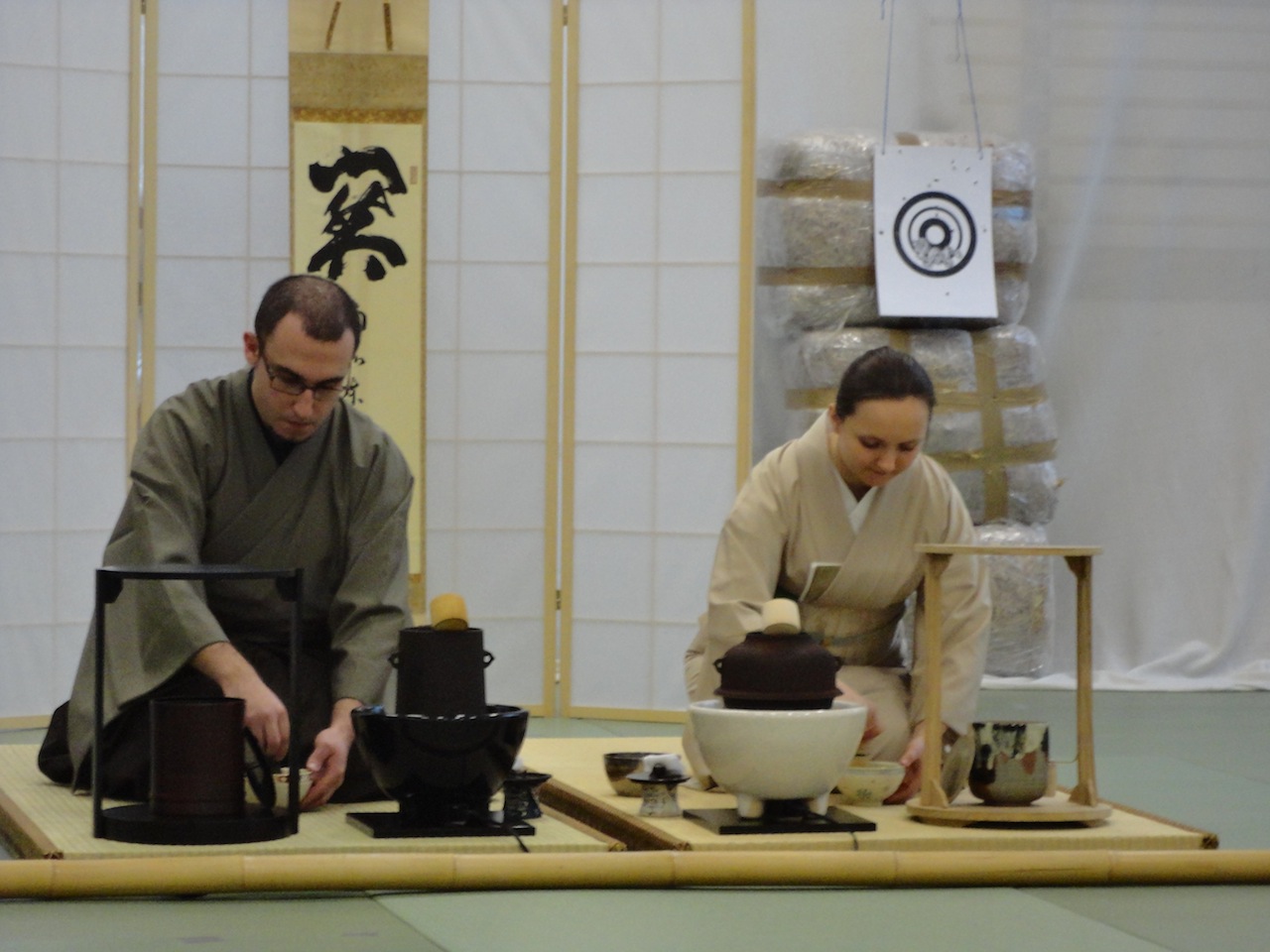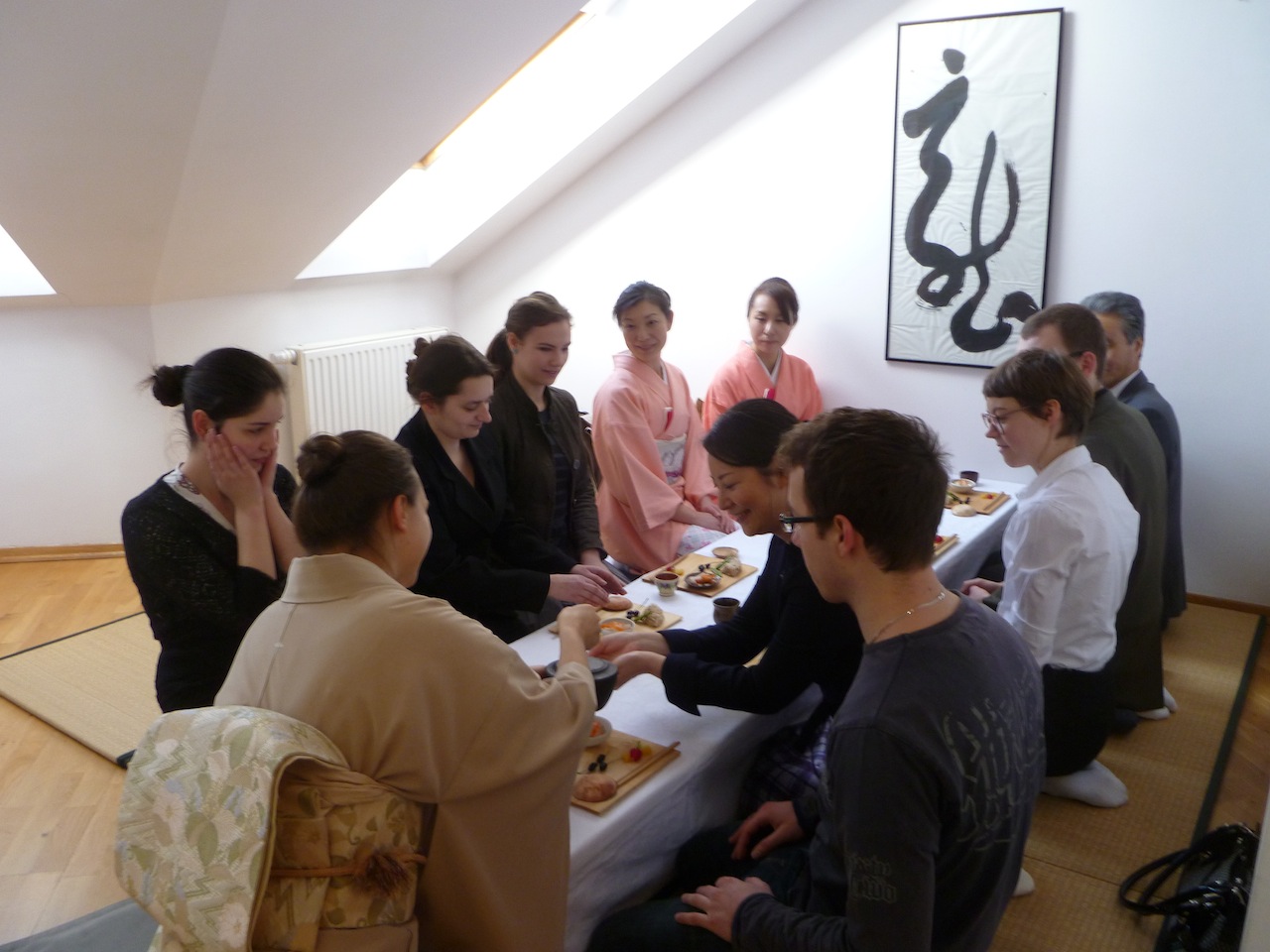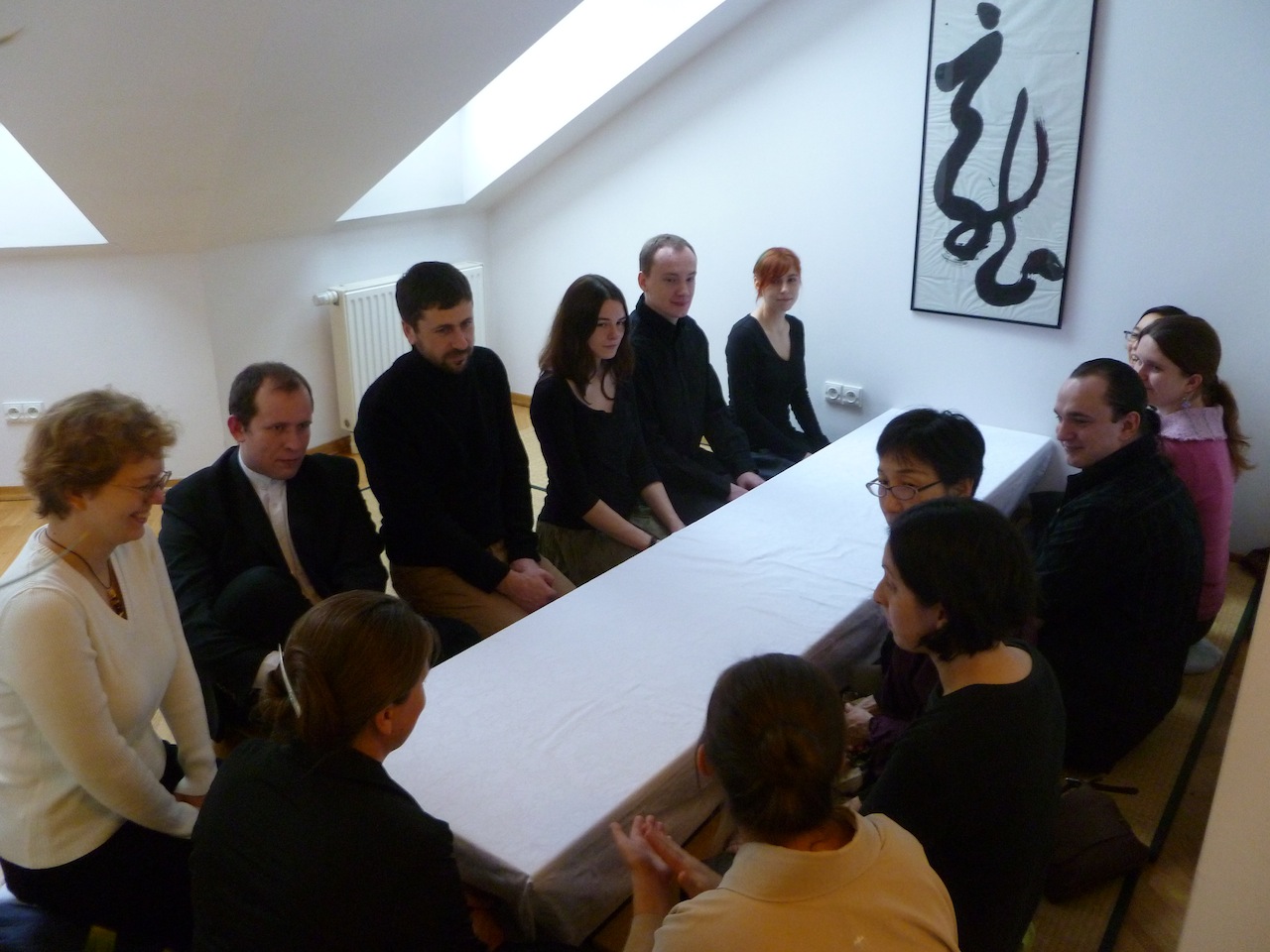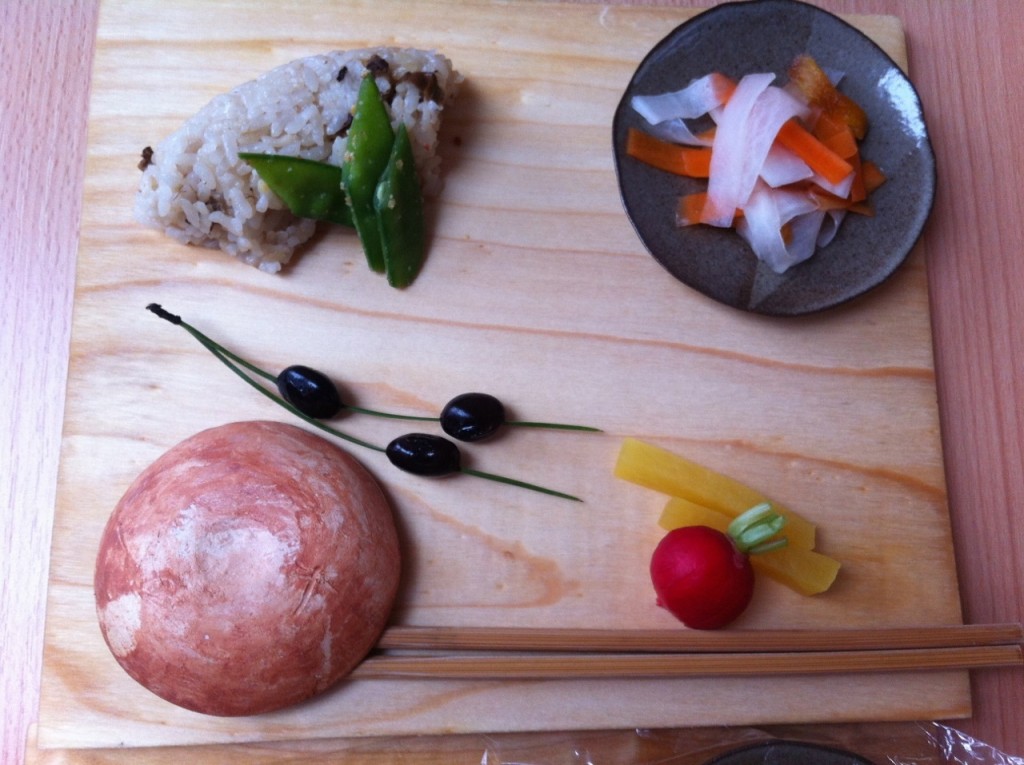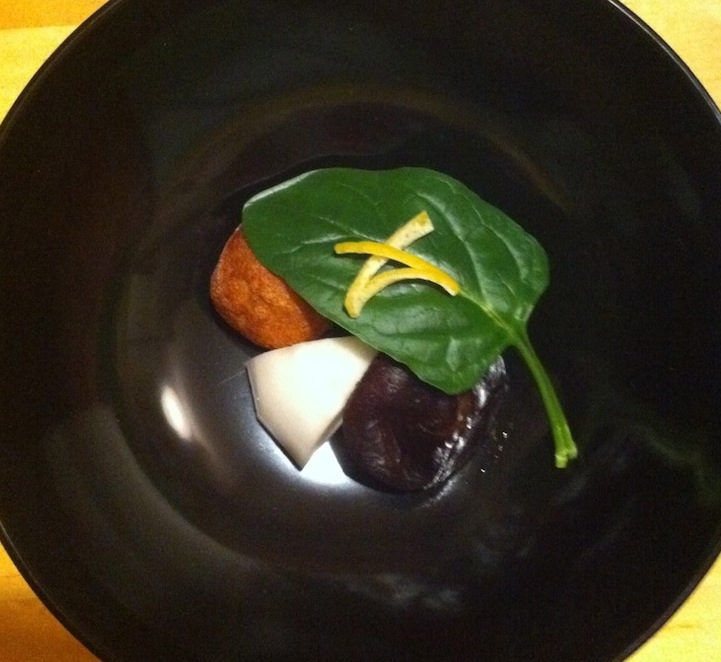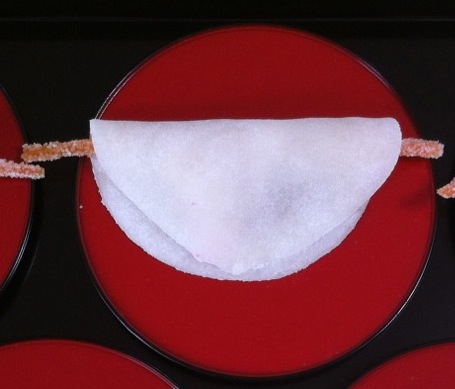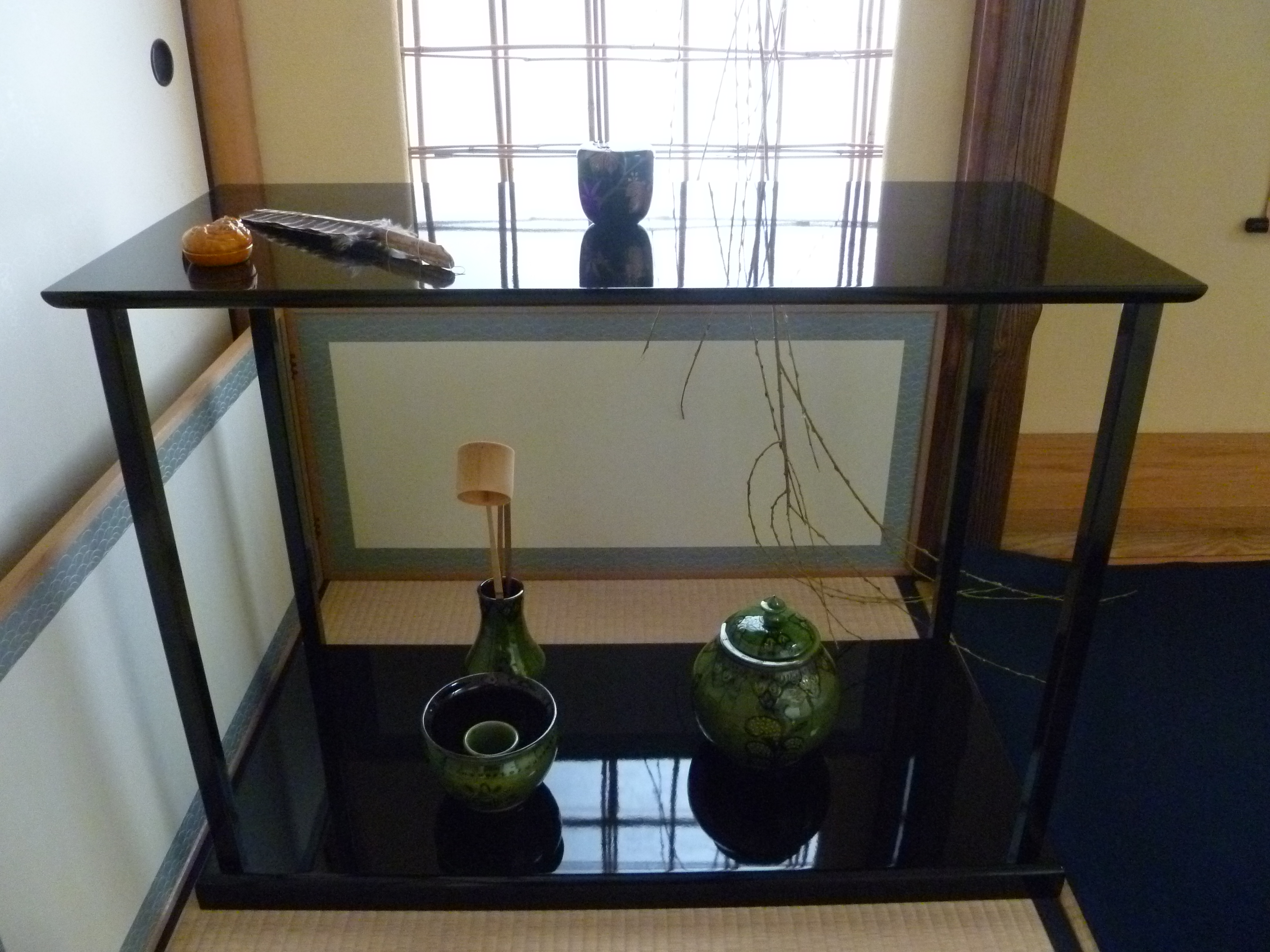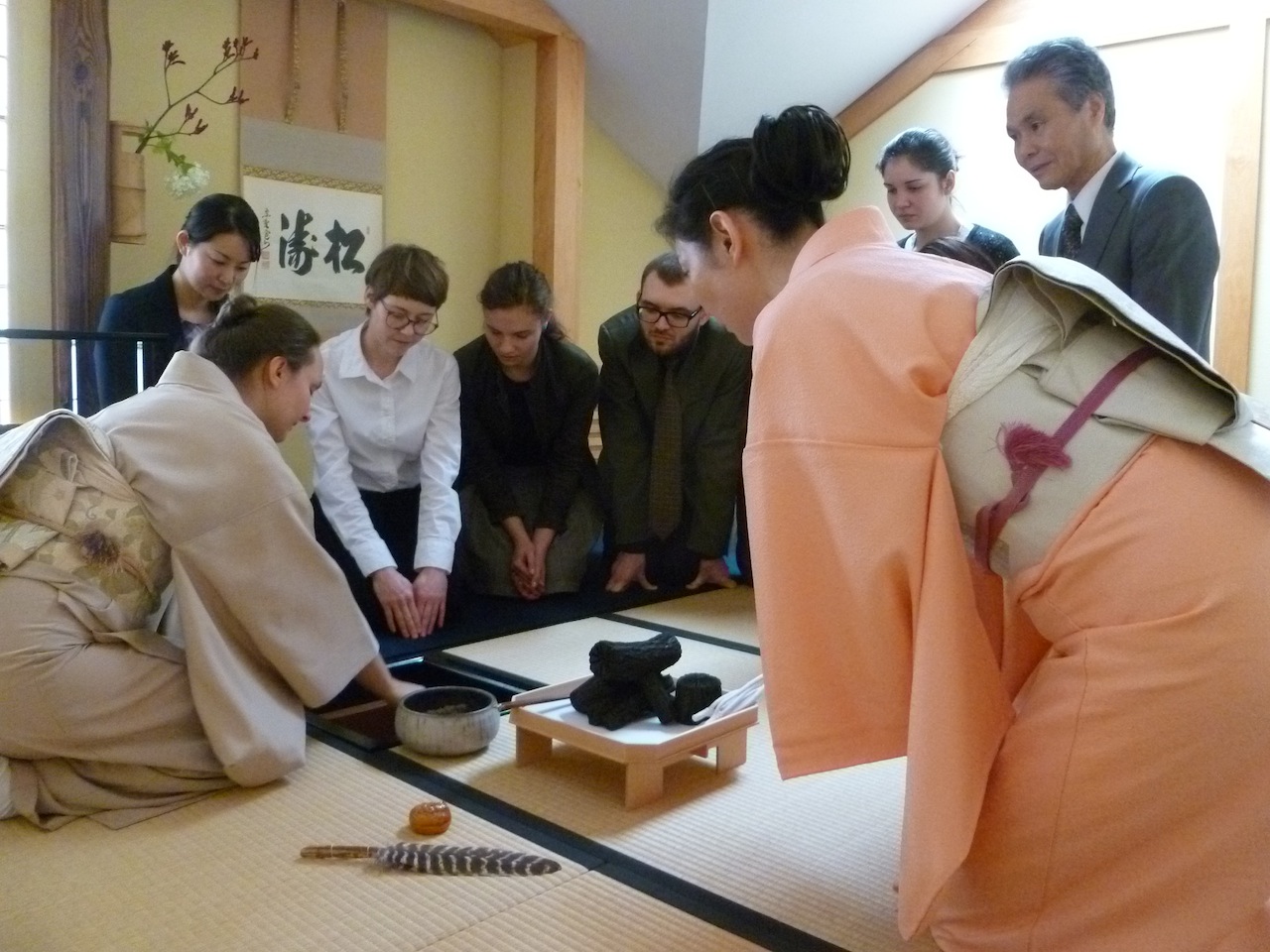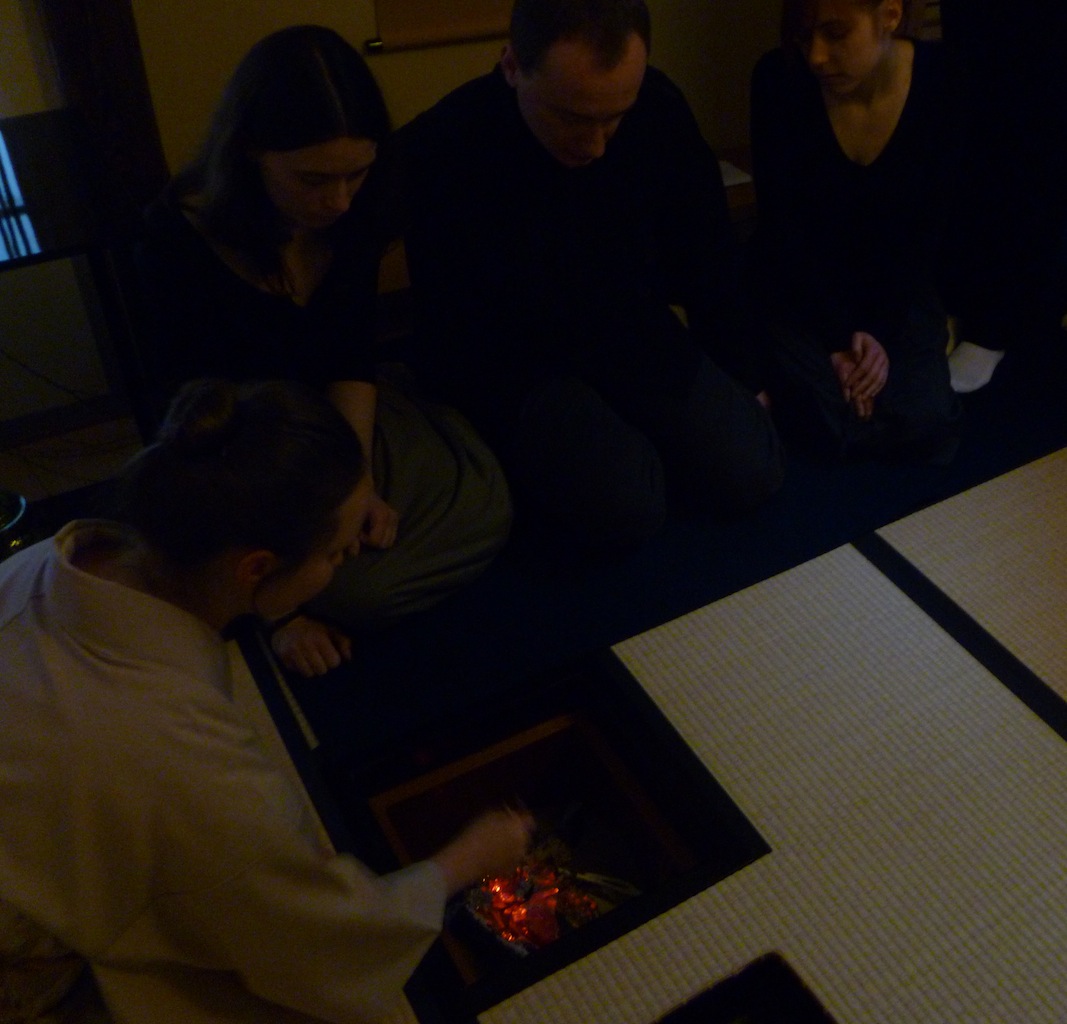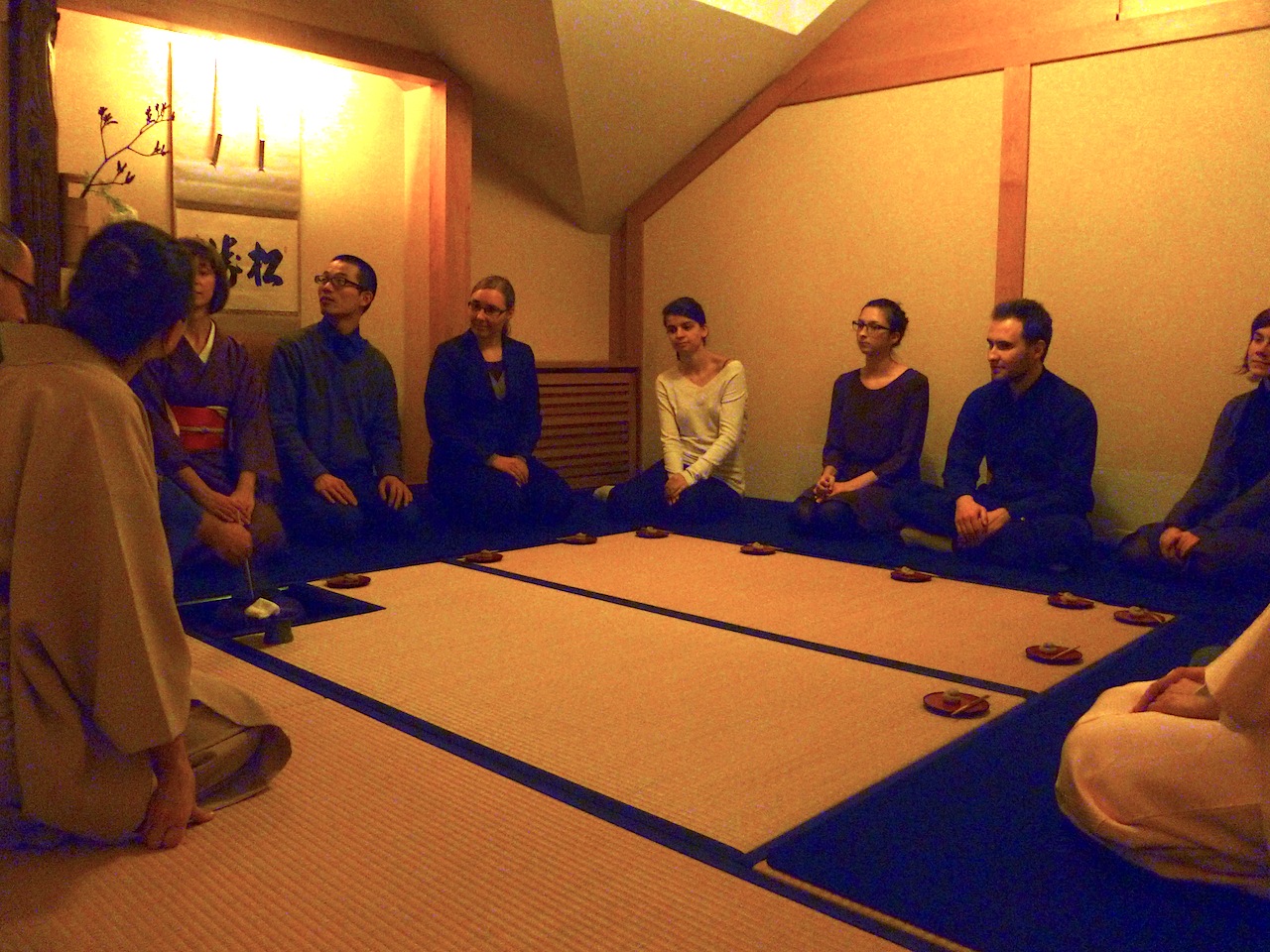15 of us met at the Warsaw practice space for a tea gathering celebrating both the opening of new tea and the sunken hearth.

The guests arrived and waited in the machiai (waiting room) where they were served a little something warm to drink

while some last minute preparations took place in the kitchen.

Next the guests entered the tearoom, did they notice the shiny wet kettle?

Ula-sensei prepared the charcoal in the sunken hearth.

The fire is set in order to quickly heat the water for tea, To give it time to do so the guests left the room for a quick meal.

A light meal was served. This description is from Ania-sensei’s Facebook post, I added some details in parentheses: “1. okayu, rice gruel with Polish groats, served with some grated ginger and Polish marinated plum; 2. misoshiru (that’s the miso soup) with pumpkin, potatoes, leeks, enoki (a type of mushroom) and black sesame; 3. fukiyose (um, Autumn’s treasures blown together into a pile) made of: lotus root mochi, shiitake, carrots in the shape of momiji (maple leaves), parsnip in the shape of pine needles, grilled zucchini and a walnut cooked with soy sauce and sugar; 4. cucumber and radish salad, with radish leaves and dressing made of lime juice and ginger juice.” Delicious, thank you Ania!

We let everyone escape to the table to rest their legs for a bit before heading back in for tea.

The last part of the meal is a sweet. This is one of the traditional sweets served at this event, called zenzai. It’s essentially sweetened adzuki bean soup with balls of mochi (sweet rice flour).

Re-entering the room for thick tea, the scroll has been replaced by flowers and the container holding the tea is in place in front of the daisu (utensil stand). You can tell the water is good and hot.

Ula enters with two of the three bowls used for the thick tea.

The guests drink their tea and then pass the empty bowls around to appreciate them.

The hosts snuck into the room and joined for the thick tea, so we ended up having four bowls circling around either being drank from or looked at artistically/esthetically.

After thick tea we removed the sliding doors and watched as people made each other thin tea within a group form called kagetsu. In addition to Warsaw we had visiting guests from Krakow and Minsk and it’s always heartwarming to practice with people who are excited enough to travel for tea.

As they randomly chose who makes and who drinks the tea the rest of us had some thin tea outside the tearoom as well.

A second round of kagetsu, just for good measure. In this form for five participants, only four bowls of tea are made, so you get better odds if you do the whole thing over again.

Finally, during the last kagetsu, Szymon led some warigeiko (parts of tea preparation) with guests who are currently enrolled in the Warsaw University tea course.
All in all it was a fine day, full of great tea and food in the company of wonderful people. Thanks to everyone who could make it out, hosts and guests alike, it couldn’t have happened without you all.
























































































